Mirrors have emerged as transformative design elements that can instantly elevate your living room's aesthetic appeal and functionality. The latest trends for 2025 emphasize bold, statement-making mirror designs that serve as both practical tools and artistic focal points. From oversized floor mirrors that create dramatic impact to carefully curated gallery walls that reflect personal style, today's living room mirror concepts go far beyond simple reflection. These versatile design elements brighten spaces, create illusions of expanded room size, and add sophisticated visual interest that complements any decor style.
1. Oversized Living Room Mirror Floor Statement
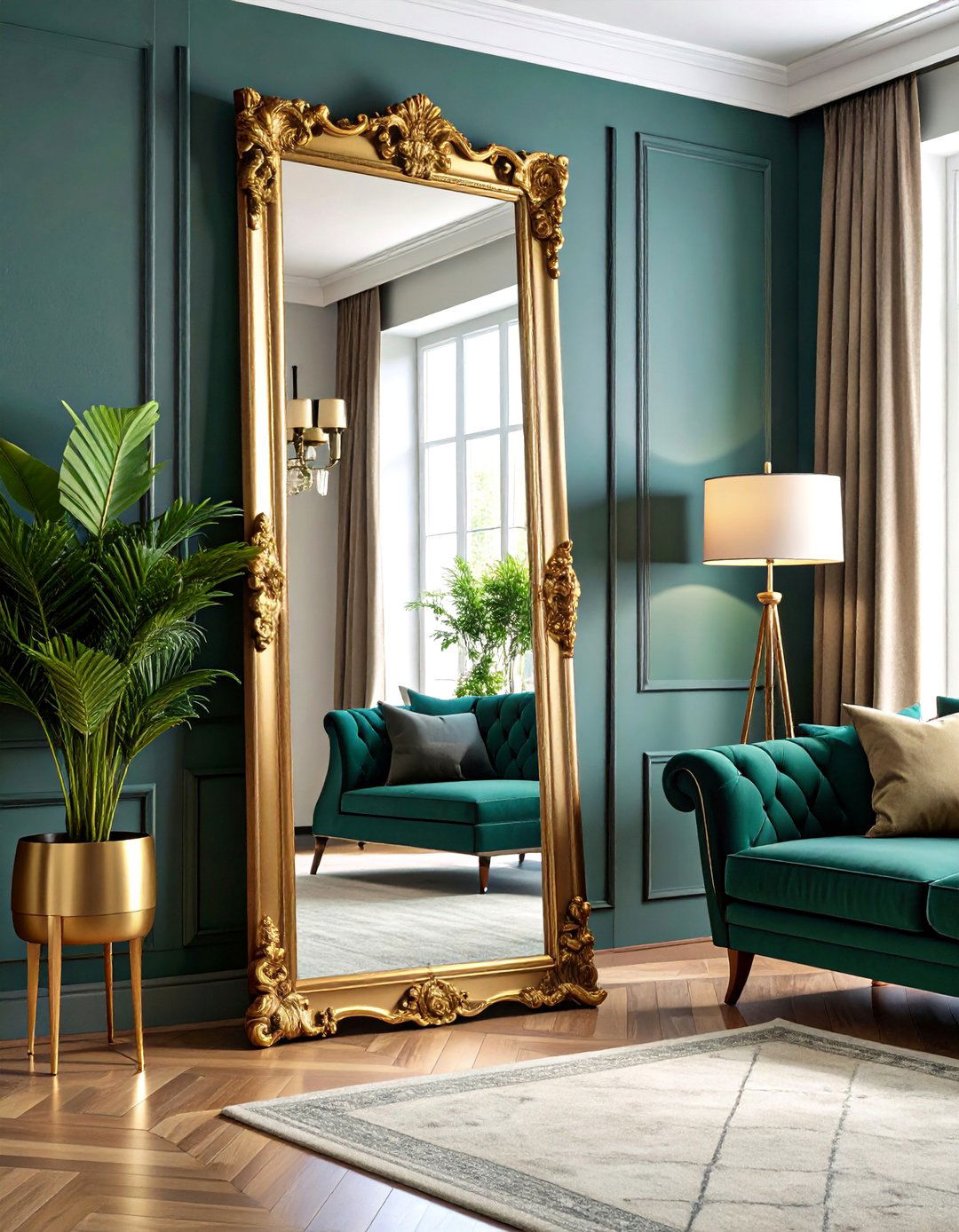
Transform your living room into a luxurious retreat with an oversized floor mirror that commands attention while serving multiple design functions. These dramatic pieces, typically measuring six feet or taller, create instant sophistication when casually leaned against a wall or positioned in a corner. The beauty lies in their ability to reflect entire room sections, making spaces appear dramatically larger while capturing and redistributing natural light throughout the day. Choose mirrors with substantial frames—whether ornate gold detailing for traditional elegance or sleek black metal for modern appeal. Position your oversized mirror to reflect attractive room elements like artwork, plants, or architectural features, creating a sophisticated layered effect that adds depth and visual intrigue to your living space.
2. Wavy Living Room Mirror Organic Design
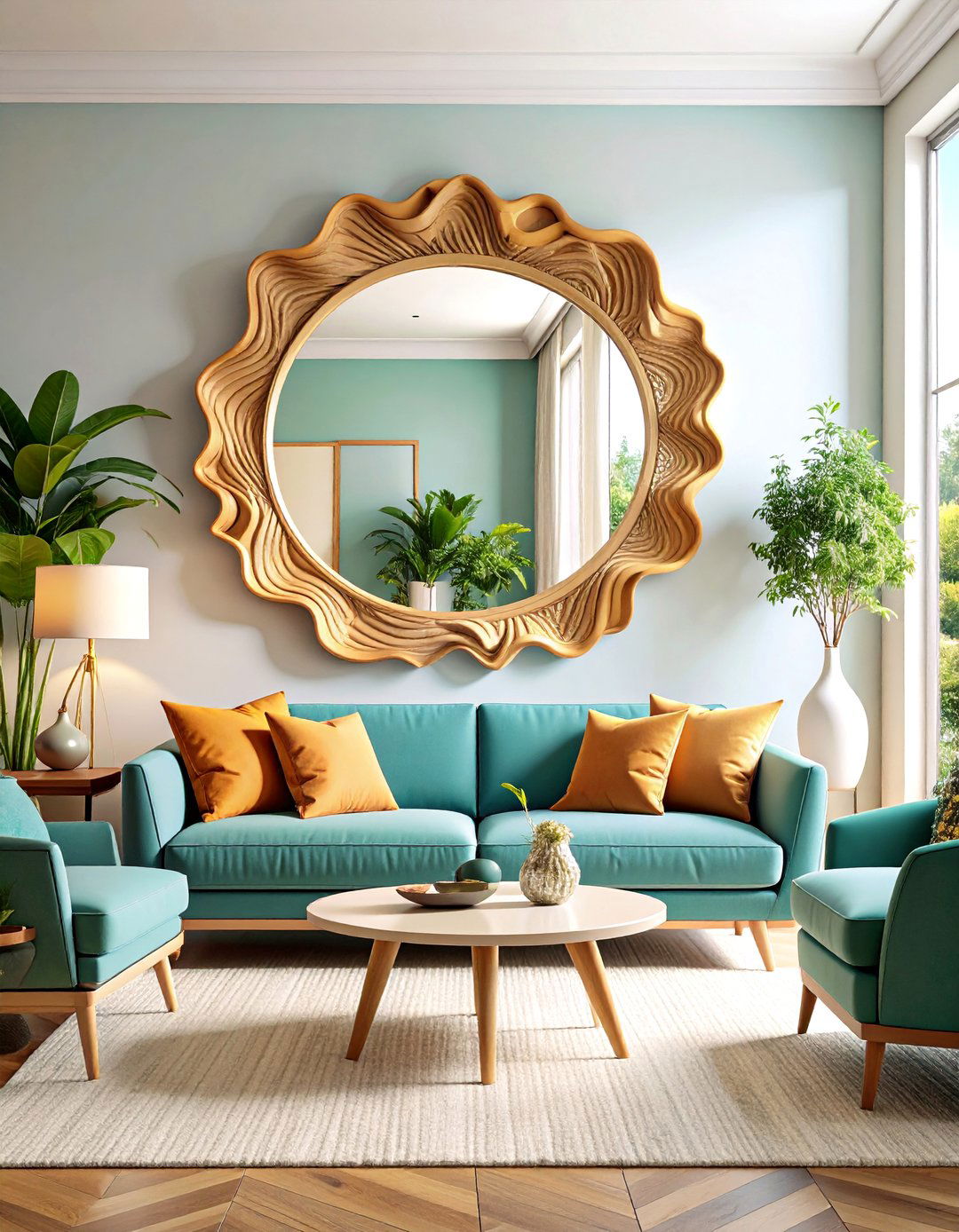
Embrace the flowing, organic aesthetic of wavy mirrors that bring natural movement and contemporary sophistication to your living room. These irregular-edged mirrors, featuring ripple-like frames that mimic flowing water, represent one of 2025's most captivating design trends. The undulating borders create dynamic visual interest while softening the sharp angles typically found in living room furniture and architecture. Install a large wavy mirror above your sofa or console table to establish a stunning focal point that draws the eye upward. The organic curves complement both modern minimalist settings and eclectic bohemian spaces, making them versatile statement pieces. Their unique silhouettes cast interesting shadows and reflections, creating an ever-changing display of light and form that adds artistic flair to your living environment.
3. Sunburst Living Room Mirror Glamorous Focal Point
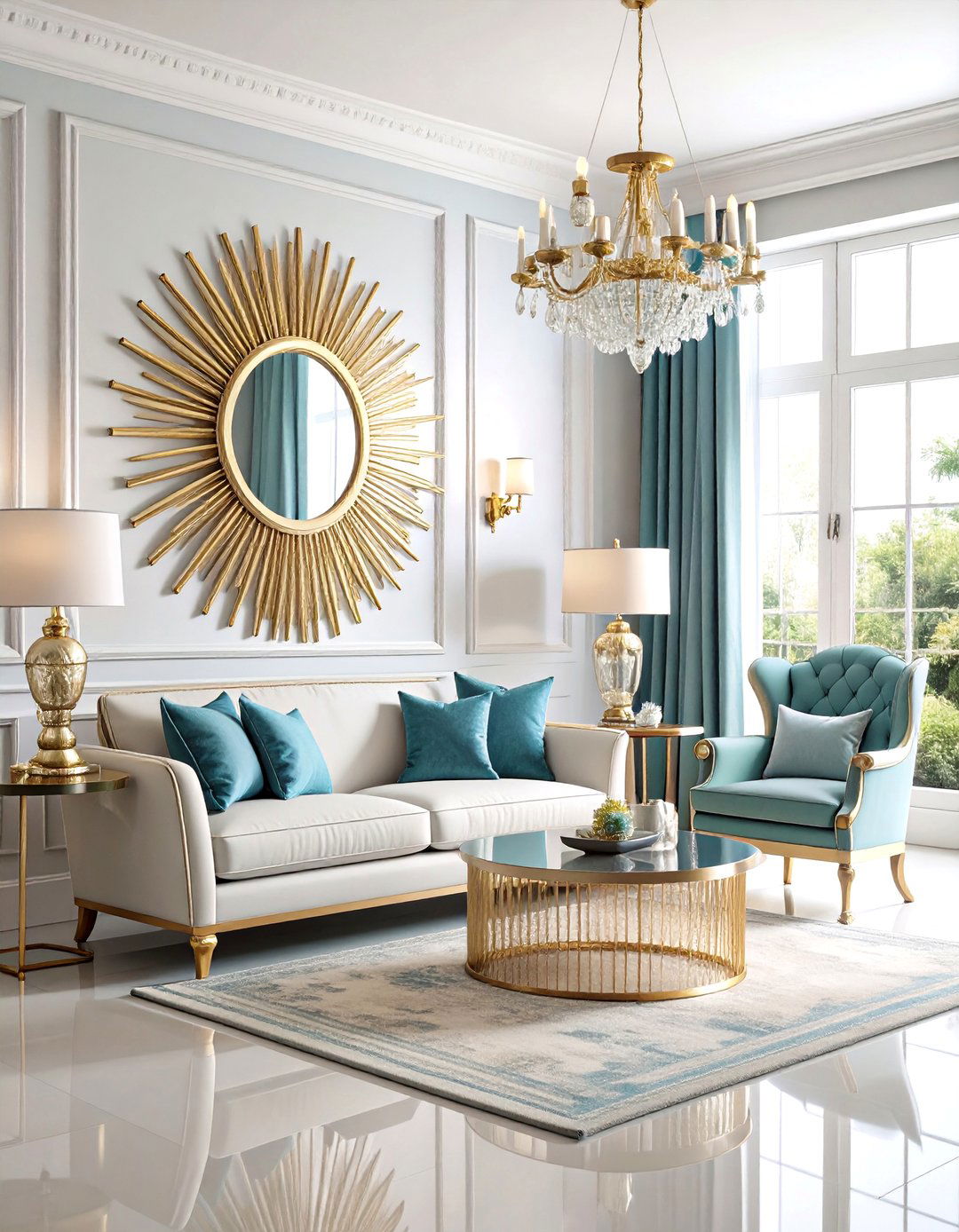
Create a dazzling centerpiece with a sunburst mirror that radiates elegance and captures the essence of Hollywood Regency glamour. These sculptural pieces feature decorative rays extending from a central mirror, available in gold, silver, or mixed metallic finishes that add luxurious sparkle to any living room. Position your sunburst mirror above a fireplace mantel or behind a seating area to maximize its dramatic impact. The radiating design naturally draws attention while reflecting light in multiple directions, creating a warm, inviting ambiance. Choose larger sunburst mirrors for spacious rooms or cluster smaller versions for dynamic arrangement flexibility. Pair with rich textures like velvet upholstery and brass accents to enhance the glamorous atmosphere. The timeless appeal of sunburst mirrors makes them perfect for both traditional and contemporary living spaces seeking sophisticated flair.
4. Living Room Mirror Gallery Wall Curated Collection
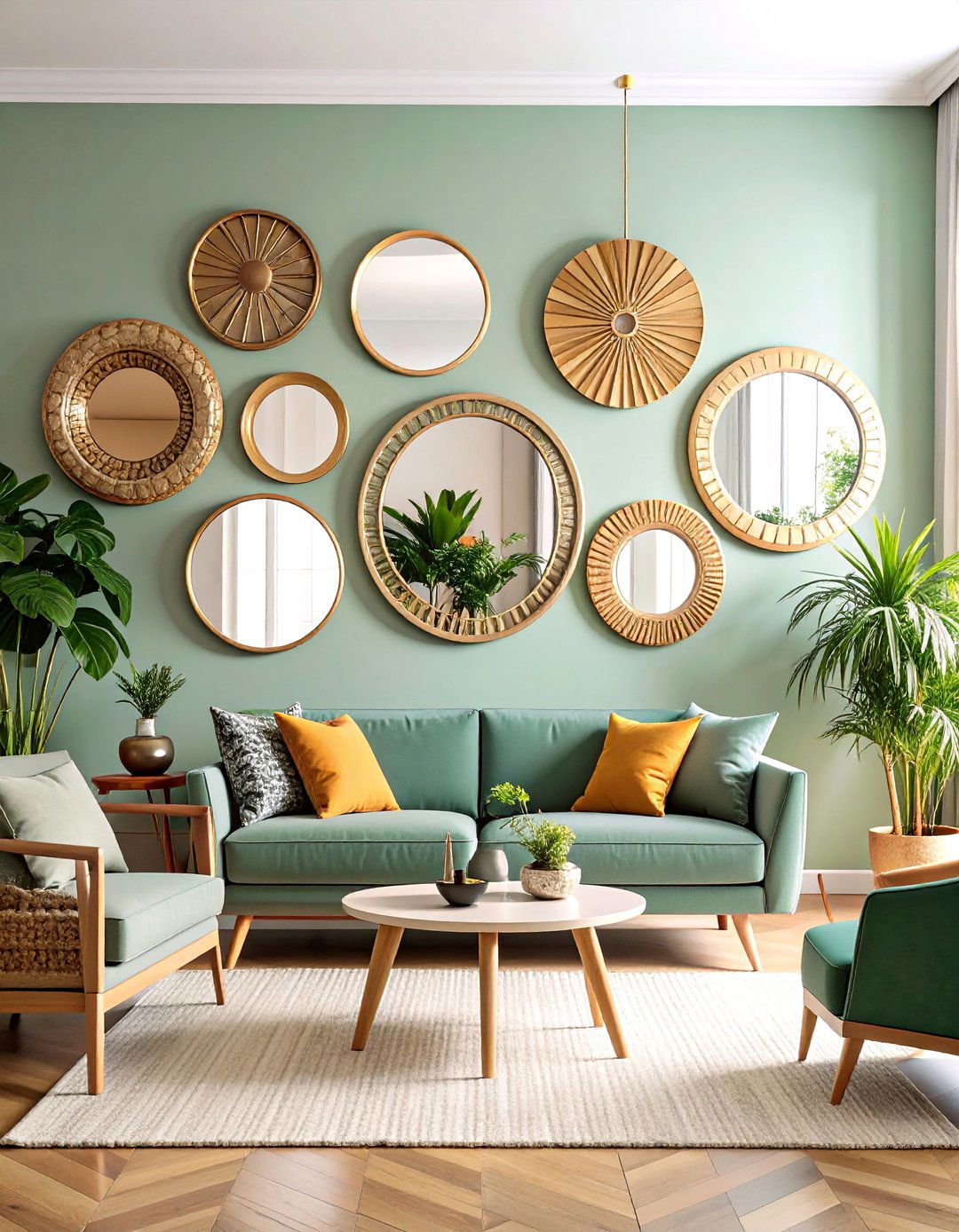
Design a captivating gallery wall featuring an artfully arranged collection of mirrors in varying sizes, shapes, and frame styles that creates visual storytelling through reflection. Start with a substantial central mirror as your anchor piece, then surround it with smaller complementary mirrors in different geometric forms—round, oval, hexagonal, and rectangular shapes create dynamic visual rhythm. Mix metallic finishes like gold, silver, and copper frames for added richness, or maintain cohesion with matching frame colors. Include vintage finds alongside modern pieces to create an eclectic yet harmonious display. The key is balancing visual weight by distributing larger mirrors throughout the arrangement while filling gaps with smaller pieces. This approach transforms a blank wall into an engaging focal point that reflects light from multiple angles, making your living room appear brighter and more spacious while showcasing your personal style.
5. Minimalist Living Room Mirror Frameless Elegance

Achieve sophisticated simplicity with frameless mirrors that embody clean, contemporary design principles while maximizing light reflection without visual clutter. These sleek mirrors feature polished edges and mounting systems that create the illusion of floating glass, perfect for modern living rooms emphasizing unadorned elegance. Install a large rectangular frameless mirror horizontally above a low console or vertically in a narrow space to enhance architectural lines. The absence of frames allows these mirrors to blend seamlessly with any color scheme or decor style while maintaining focus on function and form. Consider arranging multiple frameless mirrors in geometric patterns or linear sequences for added visual interest. Their versatility makes them ideal for small living rooms where bulky frames might overwhelm the space. The clean aesthetic complements minimalist furniture and neutral color palettes while providing practical benefits of expanded space perception.
6. Antique Living Room Mirror Vintage Character
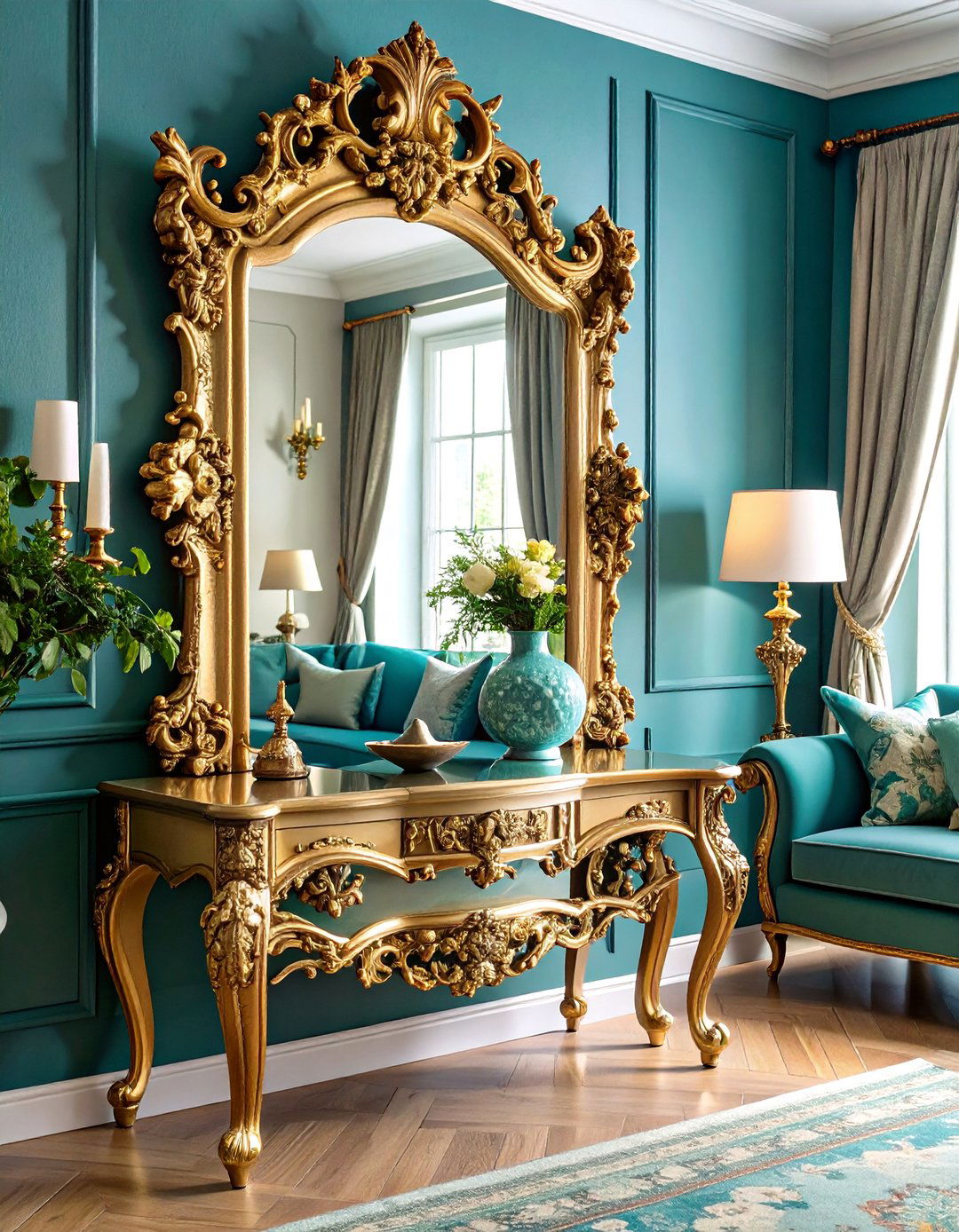
Infuse your living room with timeless charm using antique mirrors that showcase ornate craftsmanship and historical elegance. These vintage pieces feature elaborate carved frames, gilded details, and aged patinas that add authentic character and sophisticated warmth to contemporary spaces. Choose mirrors with baroque flourishes, rococo elements, or Art Deco geometries that complement your existing furniture and architectural details. Position an antique mirror above a traditional fireplace or behind a vintage console table to create a cohesive period-appropriate vignette. The weathered finishes and intricate frame work serve as conversation pieces while reflecting light in subtle, flattering ways. Layer antique mirrors with period-appropriate accessories like candlesticks, vintage books, or fresh flowers to enhance the historical ambiance. These timeless pieces work beautifully in both traditional and eclectic living rooms, providing sophisticated focal points that celebrate craftsmanship and design heritage.
7. Geometric Living Room Mirror Modern Patterns
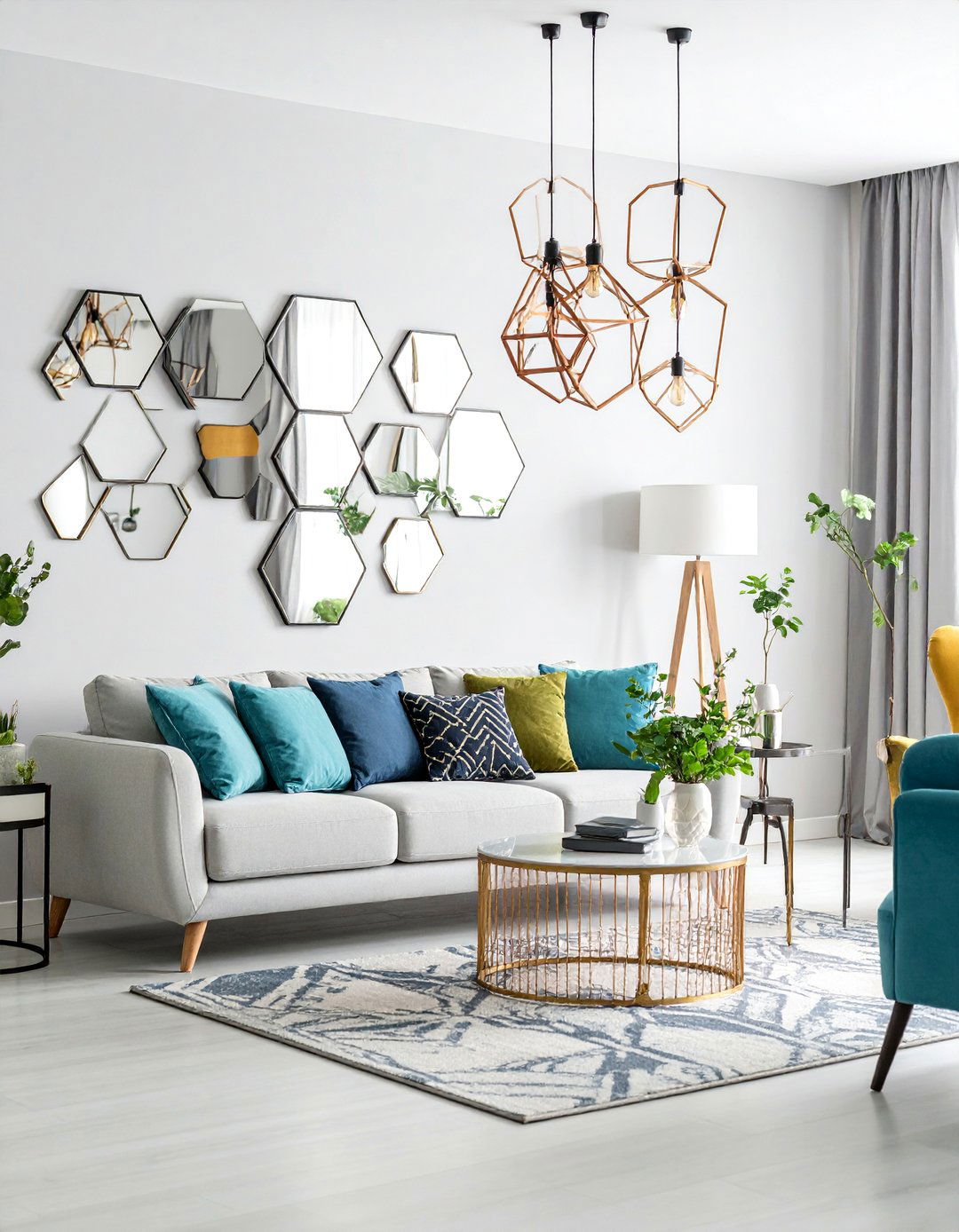
Create striking visual impact with geometric mirrors that showcase bold shapes and contemporary design sensibilities through hexagonal, triangular, and diamond configurations. These modern mirrors often feature angular frames or interesting negative space that adds architectural interest to living room walls. Arrange multiple geometric mirrors in clustered formations or precise grid patterns to create custom wall installations that serve as functional art. The sharp lines and defined shapes complement contemporary furniture while adding dimensional interest to flat wall surfaces. Choose mirrors with metallic geometric frames in brass, copper, or black finishes to enhance the modern aesthetic. Consider backlit geometric mirrors for additional drama and ambient lighting effects. These statement pieces work particularly well in open-concept living spaces where they can define areas while maintaining visual flow. The mathematical precision of geometric designs appeals to contemporary sensibilities while providing practical light reflection benefits.
8. Arched Living Room Mirror Architectural Grace
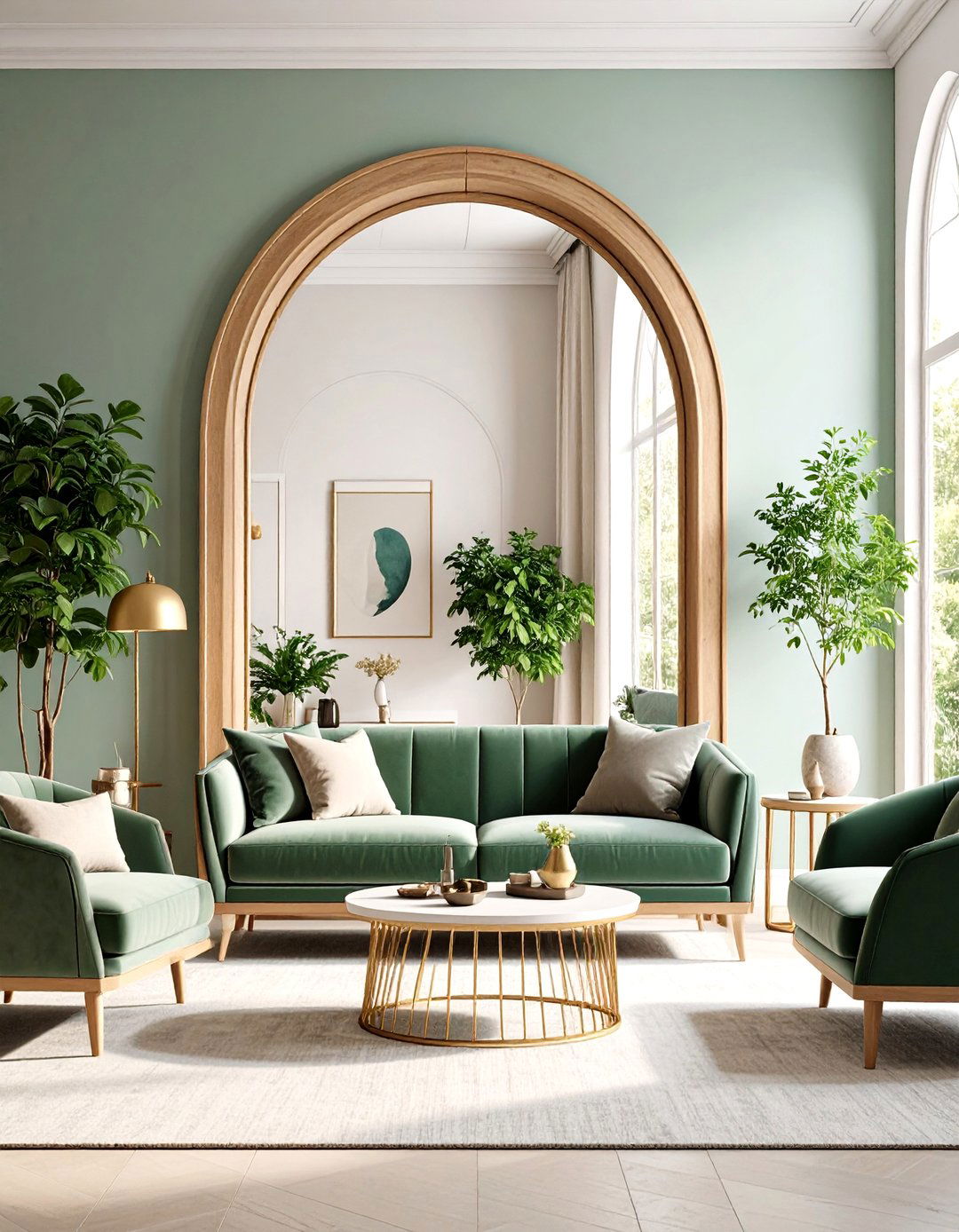
Introduce architectural elegance with arched mirrors that echo classical design elements while adding sophisticated curves to contemporary living spaces. These graceful mirrors feature rounded tops reminiscent of cathedral windows, doorways, or Roman architecture, creating vertical emphasis that draws the eye upward. Install a large arched mirror above a sofa or console to establish a dramatic focal point that softens angular furniture lines. The curved silhouette complements both traditional and modern interiors, providing timeless appeal that transcends design trends. Choose arched mirrors with substantial frames in wood, metal, or stone finishes that coordinate with your existing architectural details. Consider pairing arched mirrors with curved furniture pieces like round coffee tables or barrel chairs to create design harmony. The vertical orientation makes rooms appear taller while the curved top adds organic warmth to geometric living room layouts.
9. Layered Living Room Mirror Textural Depth
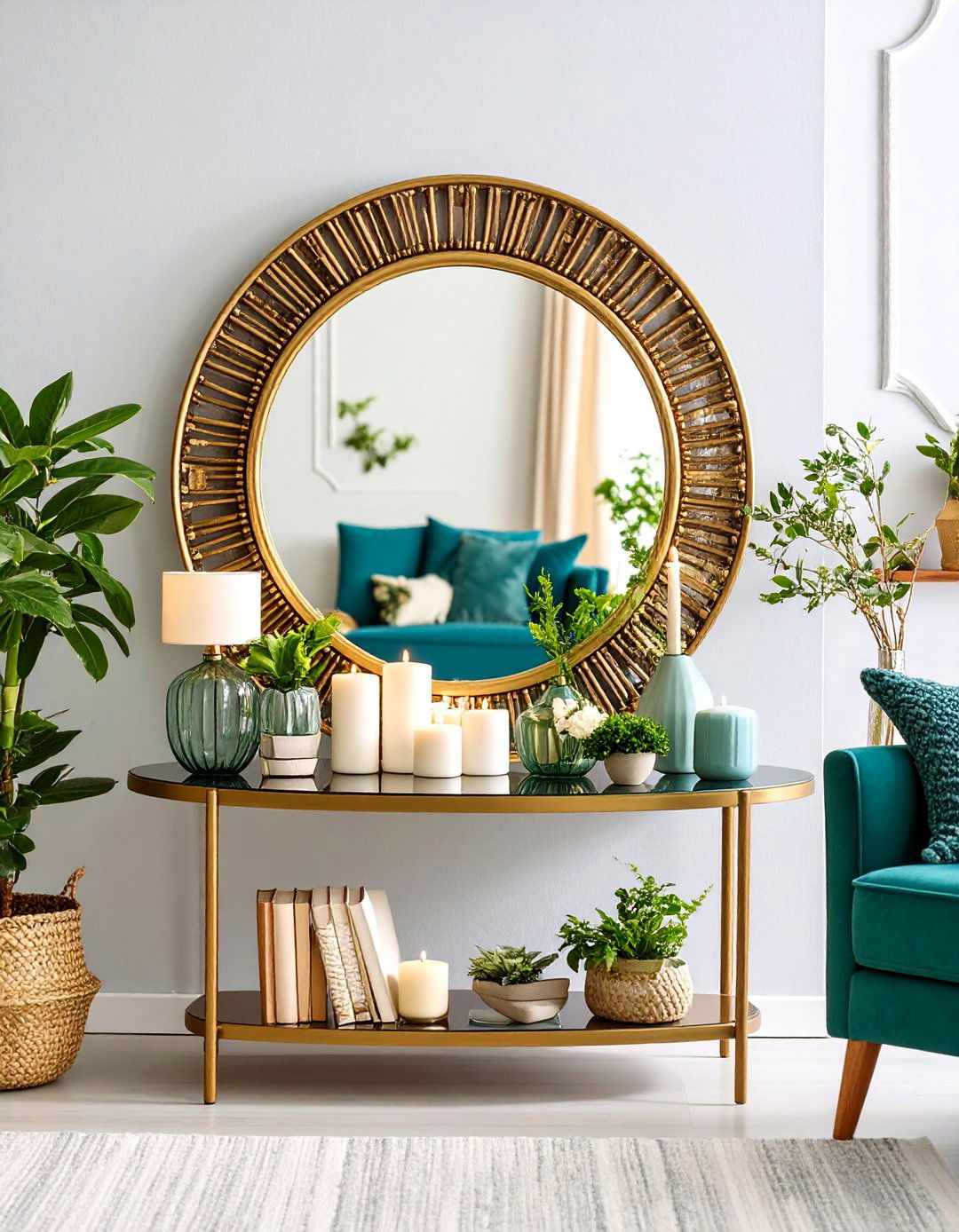
Develop rich visual complexity by layering mirrors with artwork, lighting, and decorative objects to create sophisticated vignettes that engage multiple senses. This approach involves positioning mirrors behind console tables, bookshelves, or seating areas, then adding complementary elements in front to create dimensional displays. Layer different textures like smooth mirror surfaces against rough wood, soft fabrics, or metallic accessories to create tactile interest. Include plants, books, candles, or sculptural objects that cast interesting shadows and reflections. The key is creating visual depth through overlapping elements while maintaining balanced proportions. Consider seasonal layering by changing decorative objects while keeping the mirror as a constant backdrop. This technique works particularly well with leaning mirrors that can be easily repositioned. The layered approach transforms functional mirrors into dynamic design compositions that evolve with lighting changes throughout the day.
10. Living Room Mirror Accent Wall Dramatic Impact
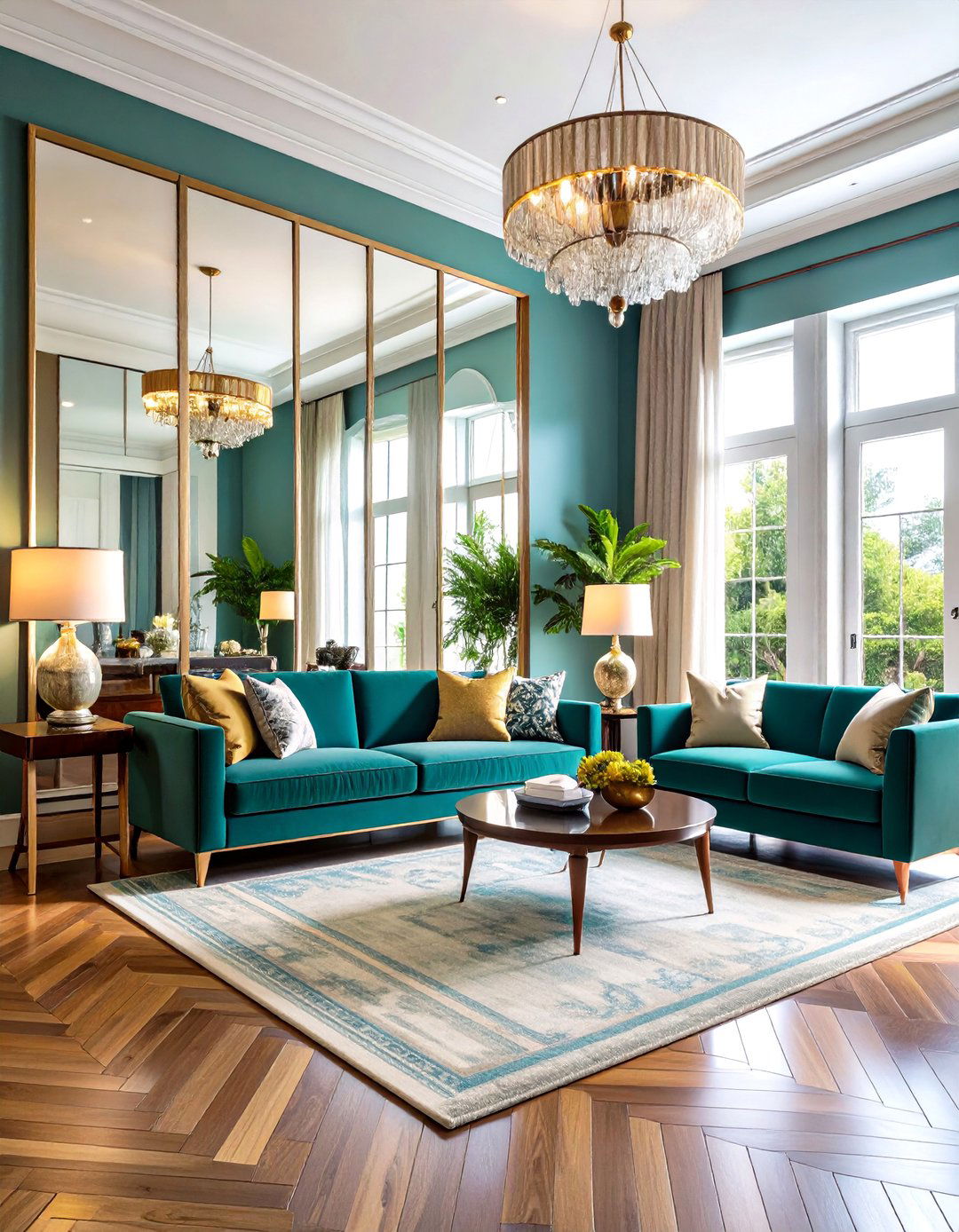
Transform an entire wall into a stunning focal point with floor-to-ceiling mirrors that create maximum visual impact and space expansion. This bold approach involves installing large mirror panels or multiple mirrors to cover a significant wall area, creating dramatic reflective surfaces that double your room's visual space. Choose mirrors with subtle gridlines or architectural framing to add structure while maintaining the expansive effect. Position the mirror wall opposite windows to maximize natural light reflection throughout the day. This technique works particularly well in smaller living rooms where space expansion is crucial, or in larger rooms where dramatic impact is desired. Consider incorporating lighting elements like sconces or uplighting to enhance the reflective properties. The mirror accent wall approach requires careful planning to ensure reflected views are attractive and purposeful, avoiding cluttered or unflattering perspectives.
11. Curved Living Room Mirror Organic Softness
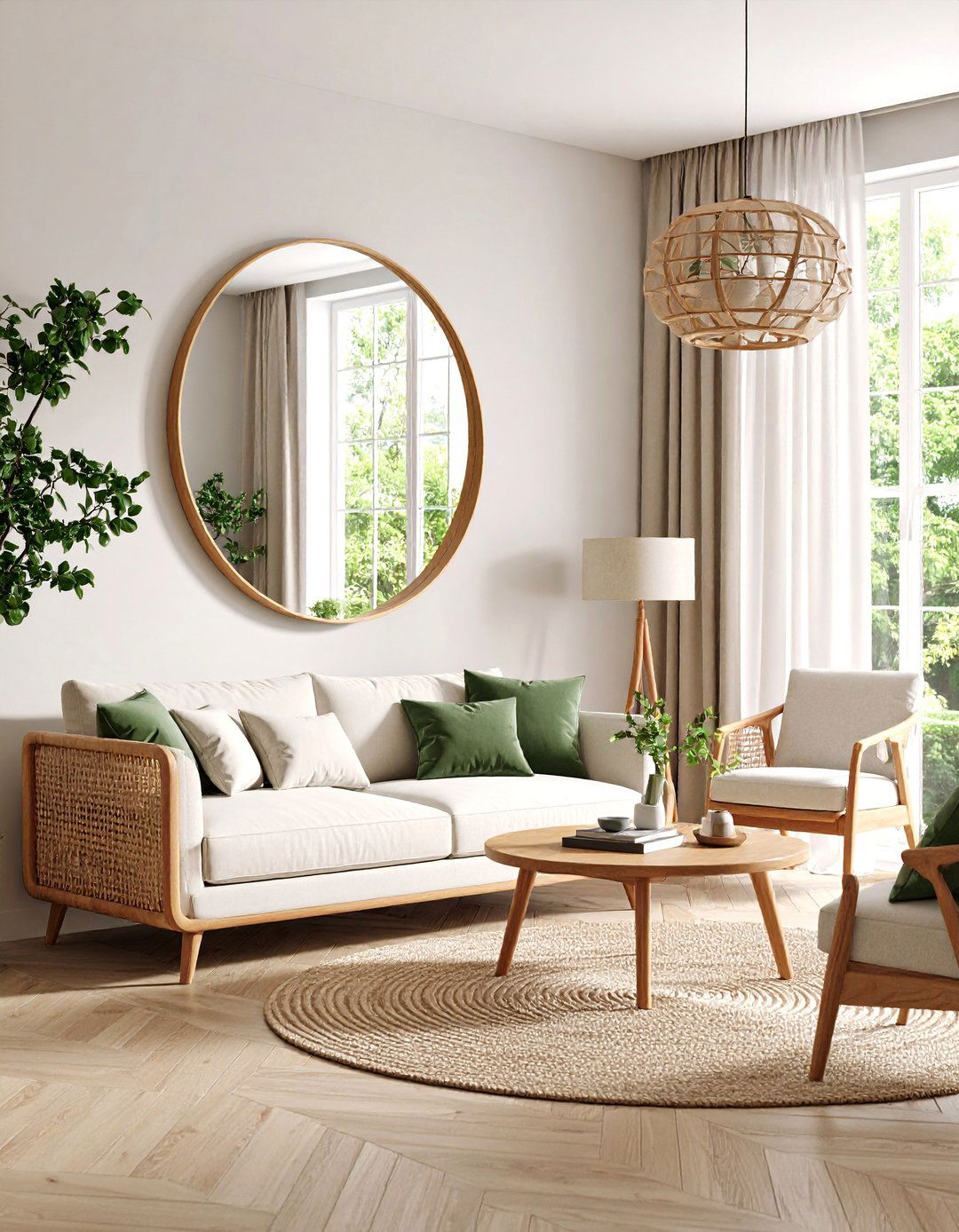
Embrace flowing, organic design with curved mirrors that introduce soft, natural lines to counterbalance angular furniture and architectural elements. These mirrors feature gently rounded or wavelike edges that create visual movement and tactile appeal, reflecting the current trend toward biophilic design principles. Curved mirrors work particularly well in living rooms with predominantly straight lines, adding feminine grace and natural harmony to structured spaces. Choose mirrors with subtly curved frames in natural materials like wood or stone to enhance the organic aesthetic. Position curved mirrors to reflect garden views, indoor plants, or other natural elements to strengthen the connection with nature. The soft edges create gentle light reflection that feels warmer and more inviting than harsh angular mirrors. Consider grouping multiple curved mirrors in different sizes to create flowing, rhythmic wall compositions that guide the eye naturally through the space.
12. Venetian Living Room Mirror Luxurious Tradition
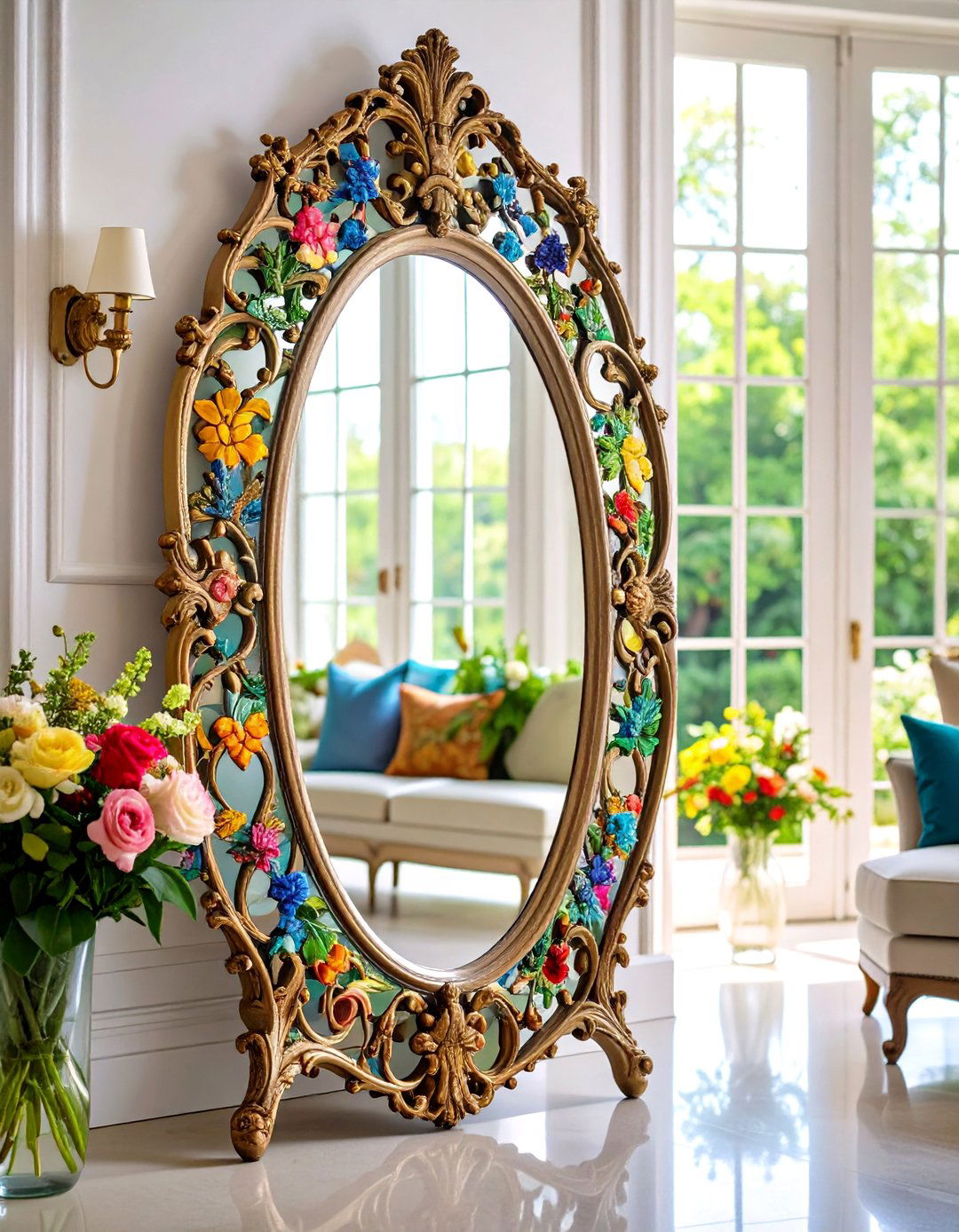
Incorporate timeless luxury with Venetian mirrors that showcase intricate etched glass details and ornate craftsmanship rooted in centuries of artistic tradition. These sophisticated mirrors feature elaborate borders with floral motifs, scrollwork, and geometric patterns etched directly into the mirror surface, creating dimensional beauty that catches and reflects light in stunning ways. The traditional craftsmanship adds immediate elegance to formal living rooms while serving as conversation pieces that showcase appreciation for artisanal skills. Position Venetian mirrors above mantels, console tables, or as centerpieces in seating areas where their details can be properly appreciated. The ornate designs complement both traditional and maximalist interiors, providing sophisticated focal points that celebrate decorative arts. Choose mirrors with silver or gold-tinted glass to enhance the luxurious aesthetic. These investment pieces add lasting value while creating stunning light displays that change throughout the day as natural light shifts across the etched surfaces.
13. Industrial Living Room Mirror Raw Materials
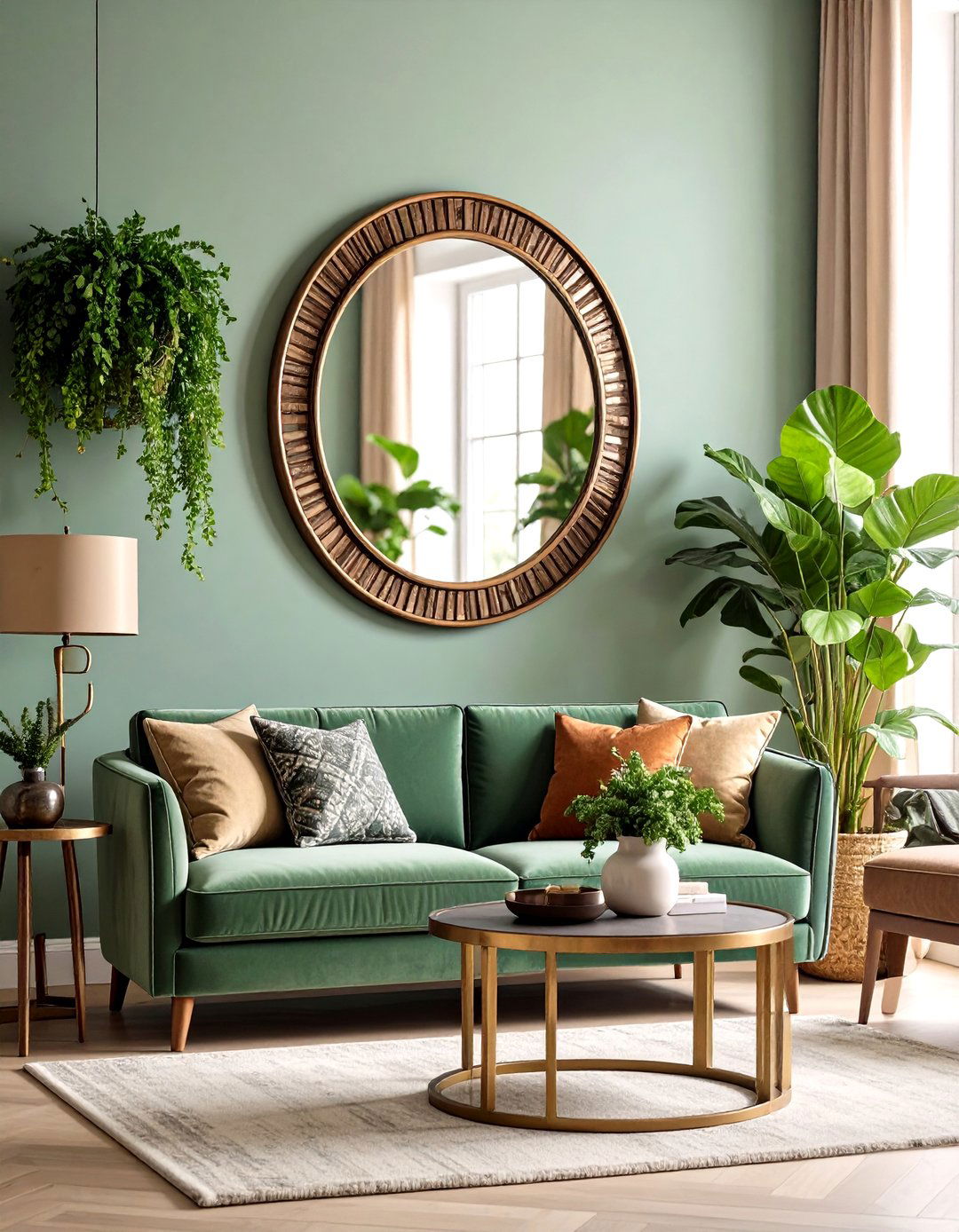
Create urban sophistication with industrial-style mirrors featuring raw materials like weathered metal, reclaimed wood, or distressed finishes that celebrate authentic textures and honest construction. These mirrors often incorporate elements like exposed hardware, rivets, or aged patinas that add character and masculine appeal to contemporary living spaces. Choose mirrors with thick metal frames in bronze, iron, or steel finishes that complement exposed brick, concrete, or wood beam architectural elements. The rugged aesthetic works particularly well in loft-style living rooms, modern farmhouse interiors, or any space seeking to balance refined and rustic elements. Position industrial mirrors to reflect interesting architectural features like exposed ductwork, brick walls, or metal staircases. The substantial construction and authentic materials create lasting durability while adding visual weight and gravitas to casual living spaces. These mirrors serve as anchor pieces that ground eclectic or contemporary interiors with authentic, handcrafted appeal.
14. Living Room Mirror Lighting Integration

Enhance functionality and ambiance by integrating mirrors with strategic lighting design that amplifies both natural and artificial light sources throughout your living space. This approach involves positioning mirrors to reflect table lamps, floor lamps, or architectural lighting, creating layered illumination that eliminates dark corners while adding sophisticated ambiance. Install mirrors opposite or adjacent to windows to maximize daylight reflection during morning and afternoon hours. Consider backlit mirrors or mirrors with integrated LED strips for dramatic evening lighting effects. The key is creating multiple light sources that work together through reflection to provide even, flattering illumination. Choose mirrors with frames that complement your lighting fixtures, whether metallic finishes that echo hardware or natural materials that coordinate with lamp bases. This integrated approach transforms mirrors from simple reflective surfaces into active components of your lighting design, creating dynamic environments that adapt to different times of day and activities.
15. Maximalist Living Room Mirror Abundant Display
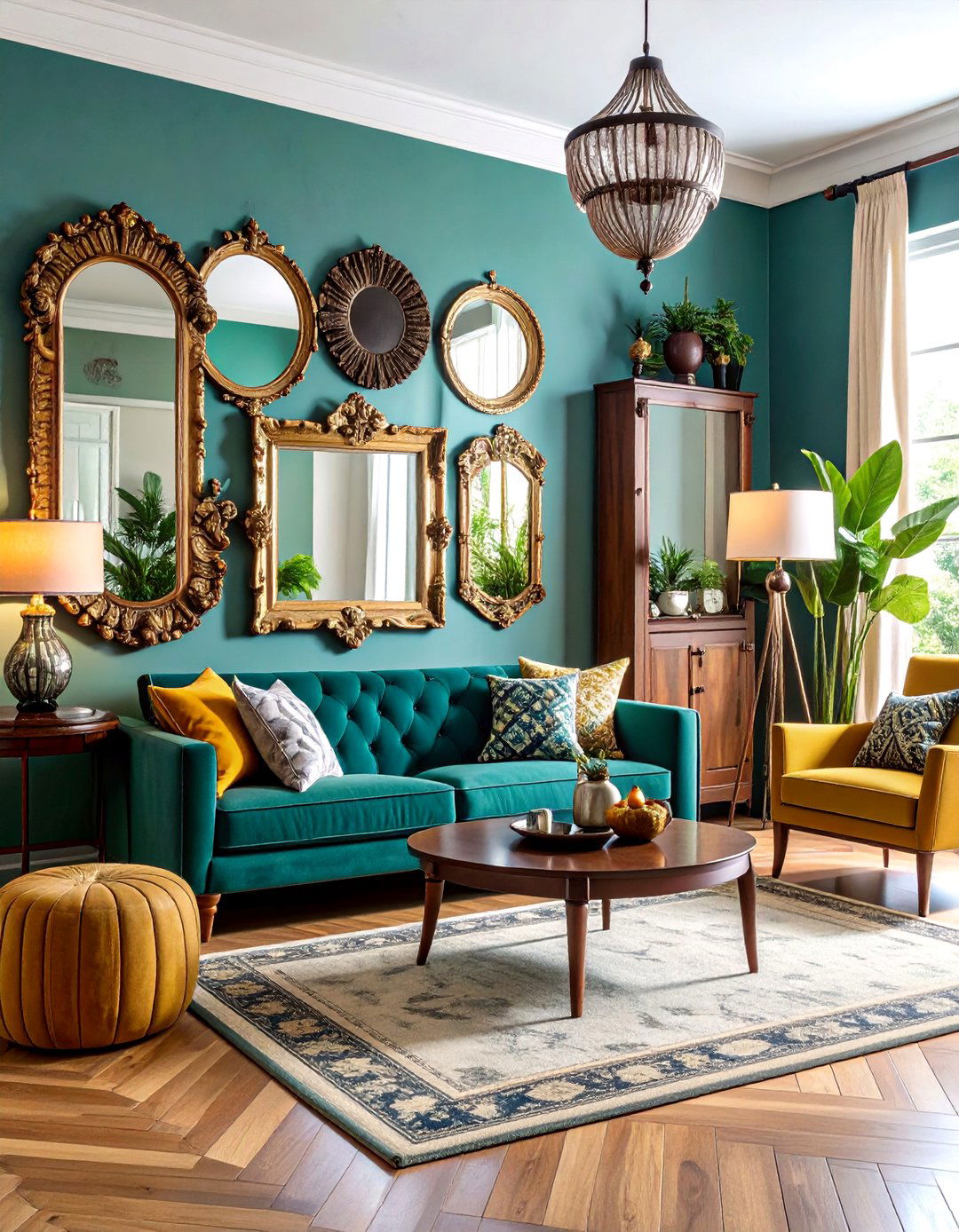
Embrace bold, layered design by incorporating multiple mirrors of varying sizes, styles, and finishes to create rich, visually engaging environments that celebrate abundance and personal expression. This approach involves mixing antique and modern mirrors, combining different shapes and frame materials, and creating unexpected juxtapositions that spark conversation and visual interest. Layer mirrors with artwork, decorative objects, and plants to create complex, evolving displays that reward close examination. The key is maintaining balance through color coordination, repeated materials, or unified themes while allowing individual pieces to maintain their distinct character. Consider creating themed collections like all-gold frames, vintage handheld mirrors, or geometric shapes that provide cohesion within abundance. Maximalist mirror displays work particularly well in eclectic living rooms where personal collections and varied interests are celebrated. The reflective surfaces multiply visual complexity while creating dynamic light patterns that change throughout the day, ensuring your living room remains visually engaging and personally meaningful.
16. Living Room Mirror Space Division
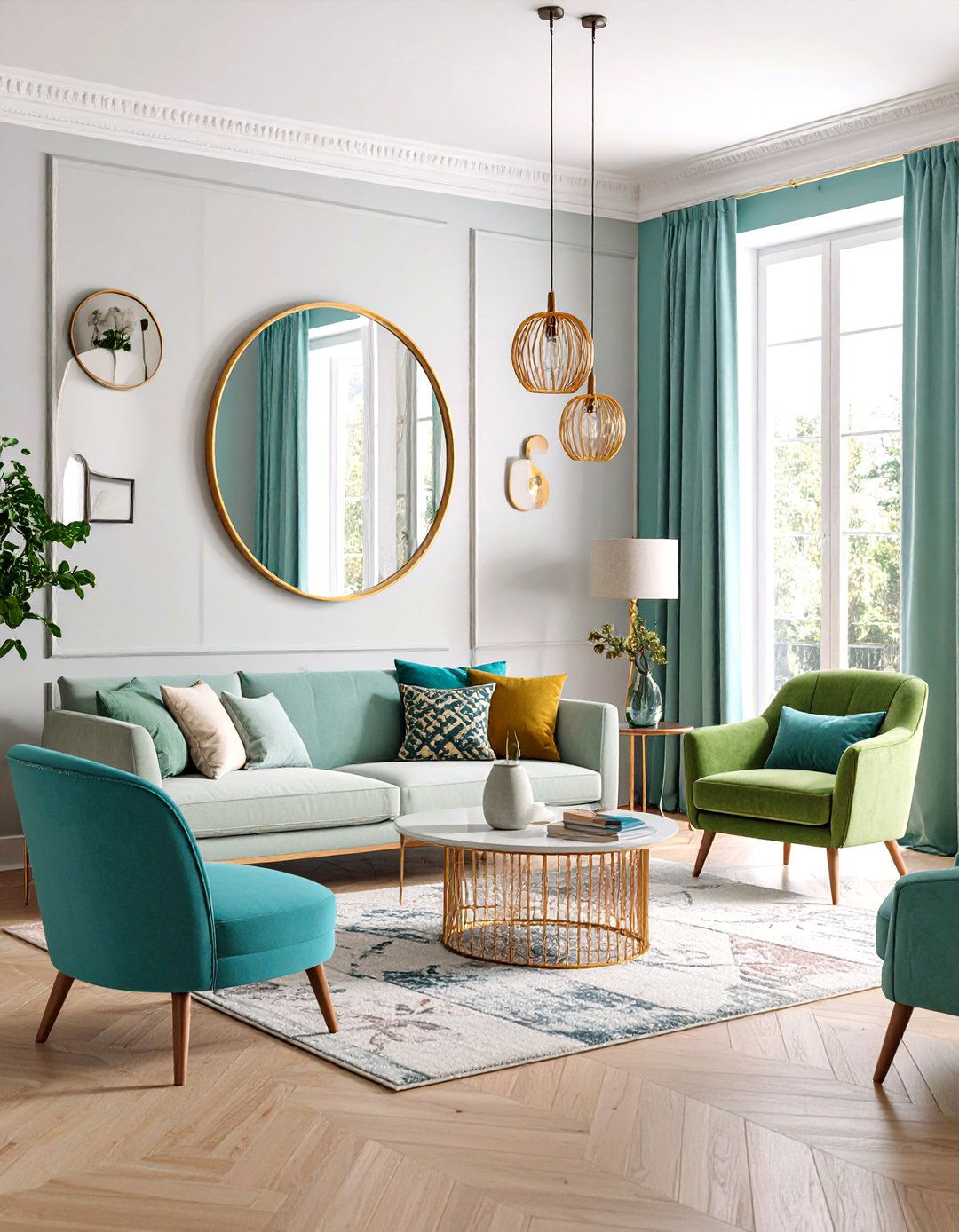
Utilize mirrors strategically to define separate areas within open-concept living spaces while maintaining visual flow and light distribution throughout the room. This approach involves positioning mirrors to create implied boundaries between seating areas, dining spaces, or work zones without blocking sightlines or natural light. Choose mirrors that complement the scale and function of each defined area, using larger mirrors for main seating areas and smaller mirrors for intimate conversation nooks. The reflective surfaces help each zone feel more spacious while maintaining connection to the overall living space. Consider using matching mirror styles to create visual consistency or vary styles to distinguish different functional areas. Position mirrors to reflect attractive elements from other zones, creating visual bridges that unite the space while maintaining distinct character. This technique works particularly well in studio apartments or open-plan homes where traditional room divisions aren't possible but defined spaces enhance livability and function.
17. Rustic Living Room Mirror Natural Warmth

Incorporate natural materials and weathered finishes through rustic mirrors that celebrate authentic textures and handcrafted character in your living room design. These mirrors typically feature frames made from reclaimed wood, natural stone, or wrought iron with aged patinas that add warmth and organic appeal to contemporary spaces. Choose mirrors with visible wood grain, rope detailing, or stone textures that complement natural fiber rugs, leather furniture, or exposed beam ceilings. The rustic aesthetic works particularly well in farmhouse, cabin, or transitional living rooms seeking to balance modern comfort with traditional charm. Position rustic mirrors to reflect outdoor views, indoor plants, or natural light sources that enhance the connection with nature. The handcrafted quality adds personality and authenticity to mass-produced furnishings while creating focal points that feel grounded and welcoming. These mirrors serve as bridges between indoor and outdoor living, bringing natural beauty into your daily environment.
18. Living Room Mirror Conversation Area
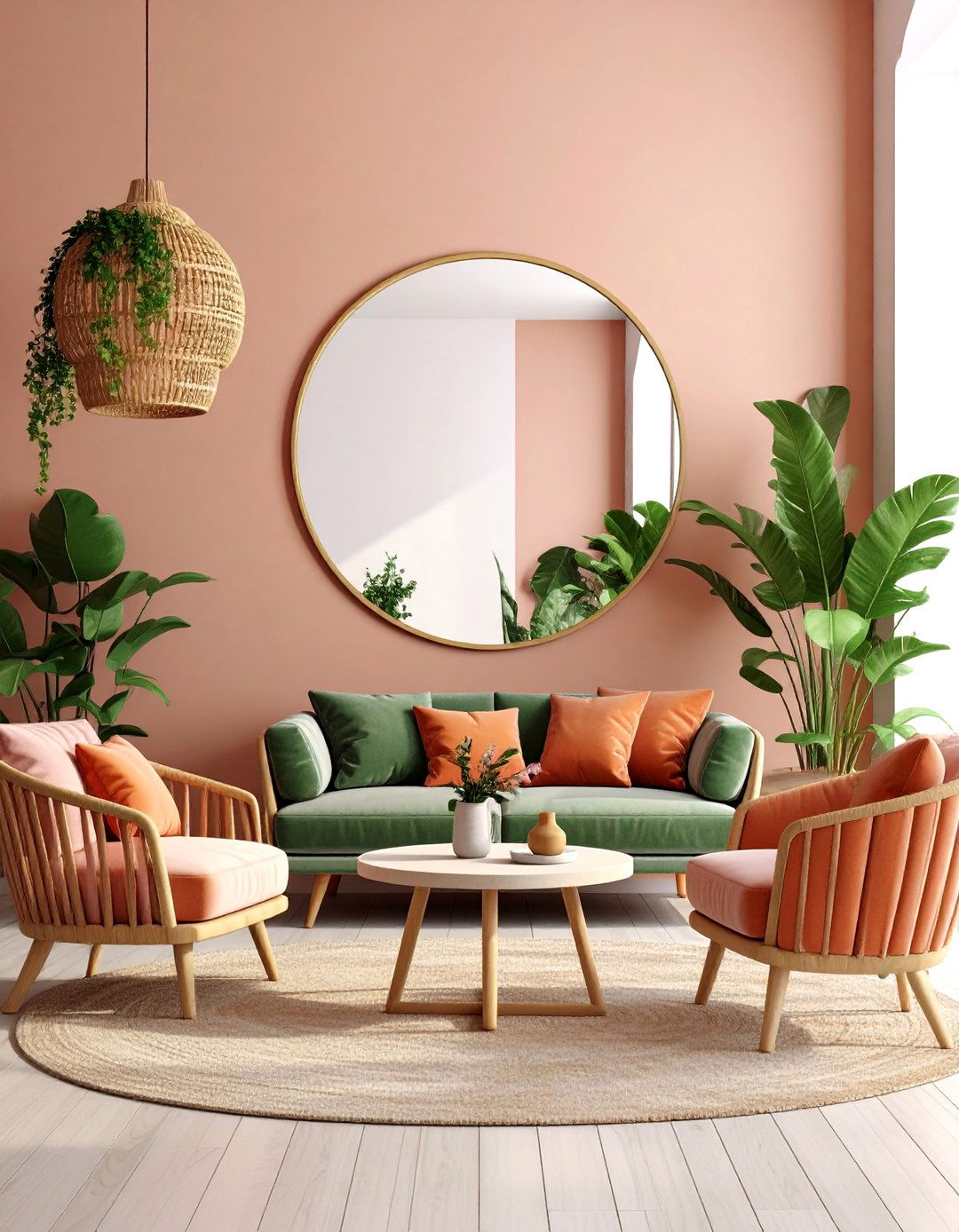
Design intimate conversation spaces by positioning mirrors to enhance seating arrangements and create cozy gathering spots within larger living rooms. This approach involves using mirrors to define and amplify small-scale seating areas, making them feel more enclosed and purposeful while maintaining visual connection to the broader space. Choose mirrors that complement the scale and formality of your seating arrangement, using ornate mirrors for formal conversation areas or simple mirrors for casual spaces. Position mirrors to reflect interesting architectural features, artwork, or natural elements that enhance the conversational atmosphere. The reflective surfaces create visual depth that makes small seating areas feel more spacious while providing flattering lighting for faces during conversation. Consider using multiple smaller mirrors rather than one large mirror to create intimate scale appropriate for close gatherings. This technique works particularly well in large living rooms where creating distinct zones enhances functionality and comfort.
19. Contemporary Living Room Mirror Artistic Expression
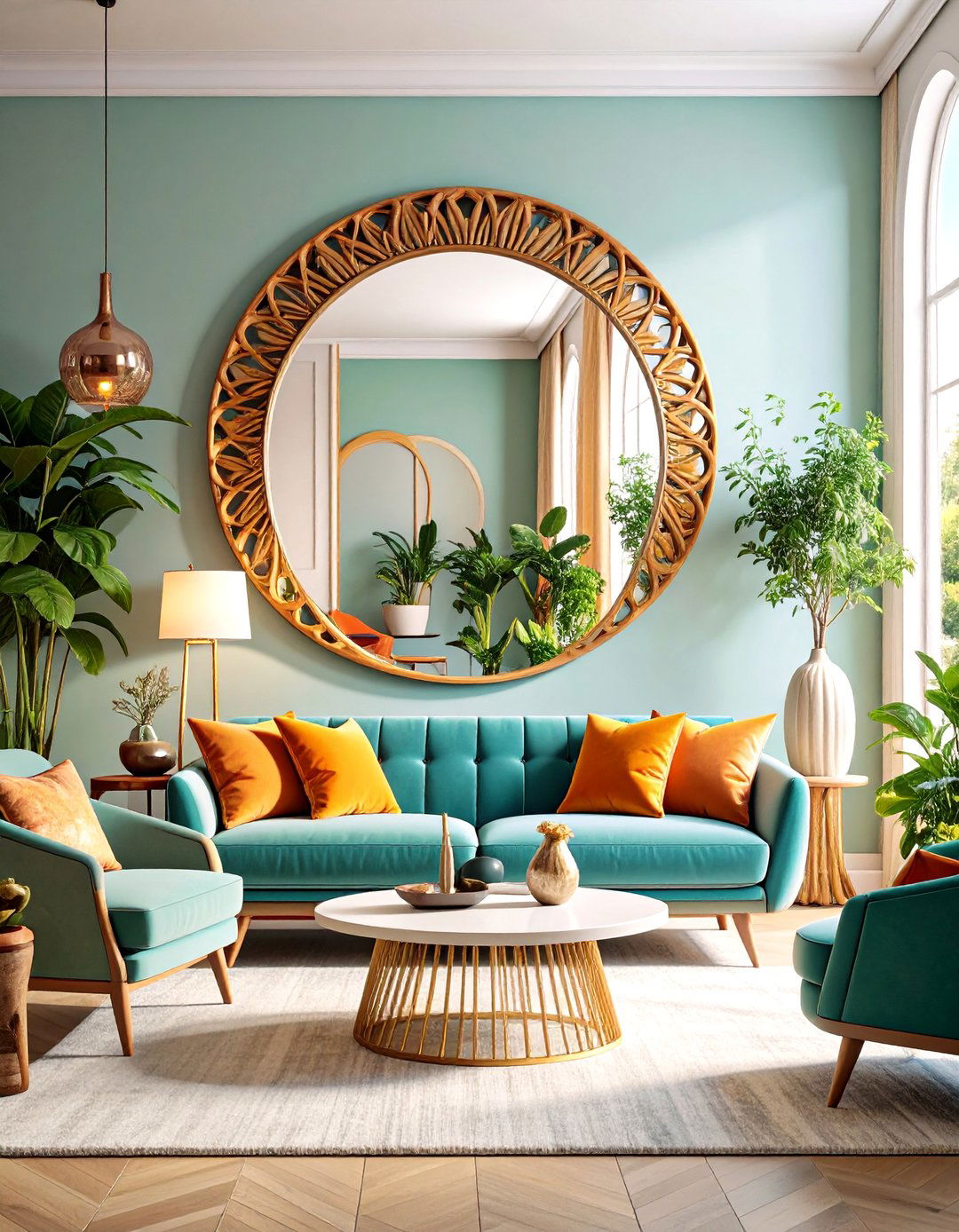
Explore mirrors as artistic statements that showcase contemporary design innovation through unusual shapes, unexpected materials, or creative installations that challenge traditional mirror conventions. These artistic mirrors often feature sculptural frames, innovative mounting systems, or integrated lighting that transforms them into functional art pieces. Choose mirrors by contemporary artists or designers that reflect current aesthetic movements while providing practical reflection benefits. Consider mirrors with colored glass, textured surfaces, or kinetic elements that create dynamic visual experiences. The artistic approach works particularly well in modern living rooms seeking unique focal points that spark conversation and demonstrate design sophistication. Position artistic mirrors where they can be appreciated as sculptural elements while serving functional purposes. These statement pieces often work best as singular focal points rather than grouped installations, allowing their unique qualities to be fully appreciated. The investment in artistic mirrors adds lasting value while creating distinctive living environments that reflect personal taste and contemporary culture.
20. Living Room Mirror Seasonal Flexibility
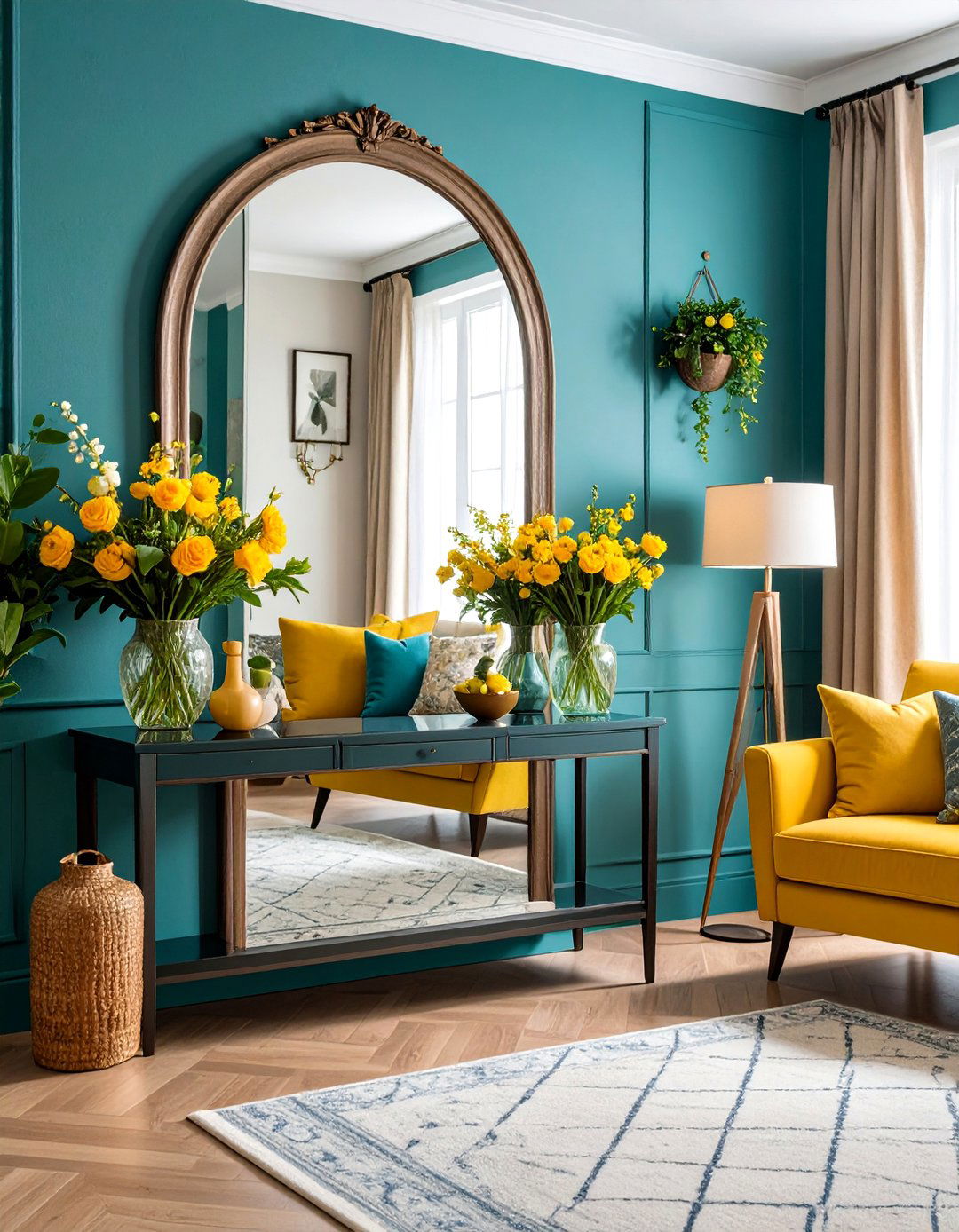
Create adaptable living spaces by incorporating mirrors that can be easily repositioned or decorated to reflect changing seasons and personal preferences throughout the year. This approach involves choosing mirrors with neutral frames that accommodate different decorative schemes, or selecting multiple mirrors that can be rotated seasonally. Consider leaning mirrors that can be moved between locations, or modular mirror systems that allow for reconfiguration. The key is creating flexibility while maintaining core design principles that ensure your living room remains cohesive regardless of seasonal changes. Use mirrors as backdrops for seasonal displays, reflecting holiday decorations, seasonal flowers, or changing artwork. The reflective surfaces amplify seasonal color schemes while maintaining consistent light distribution. This approach works particularly well for people who enjoy refreshing their living spaces regularly or those who want to maximize the impact of seasonal decorations. The adaptability ensures your mirror investment remains relevant and engaging throughout the year.
Conclusion:
Living room mirrors represent powerful design tools that transcend mere functionality to become integral elements of contemporary interior design. These versatile pieces enhance natural light, create spatial illusions, and serve as artistic focal points that reflect personal style while adapting to evolving trends. From dramatic oversized floor mirrors to carefully curated gallery walls, the possibilities for incorporating mirrors into your living space are limitless. The key to successful mirror integration lies in understanding your space's specific needs, considering existing architectural elements, and choosing pieces that complement rather than compete with your overall design vision. By embracing mirrors as both practical and aesthetic elements, you transform your living room into a brighter, more spacious, and visually engaging environment that serves your daily needs while expressing your unique design sensibility.


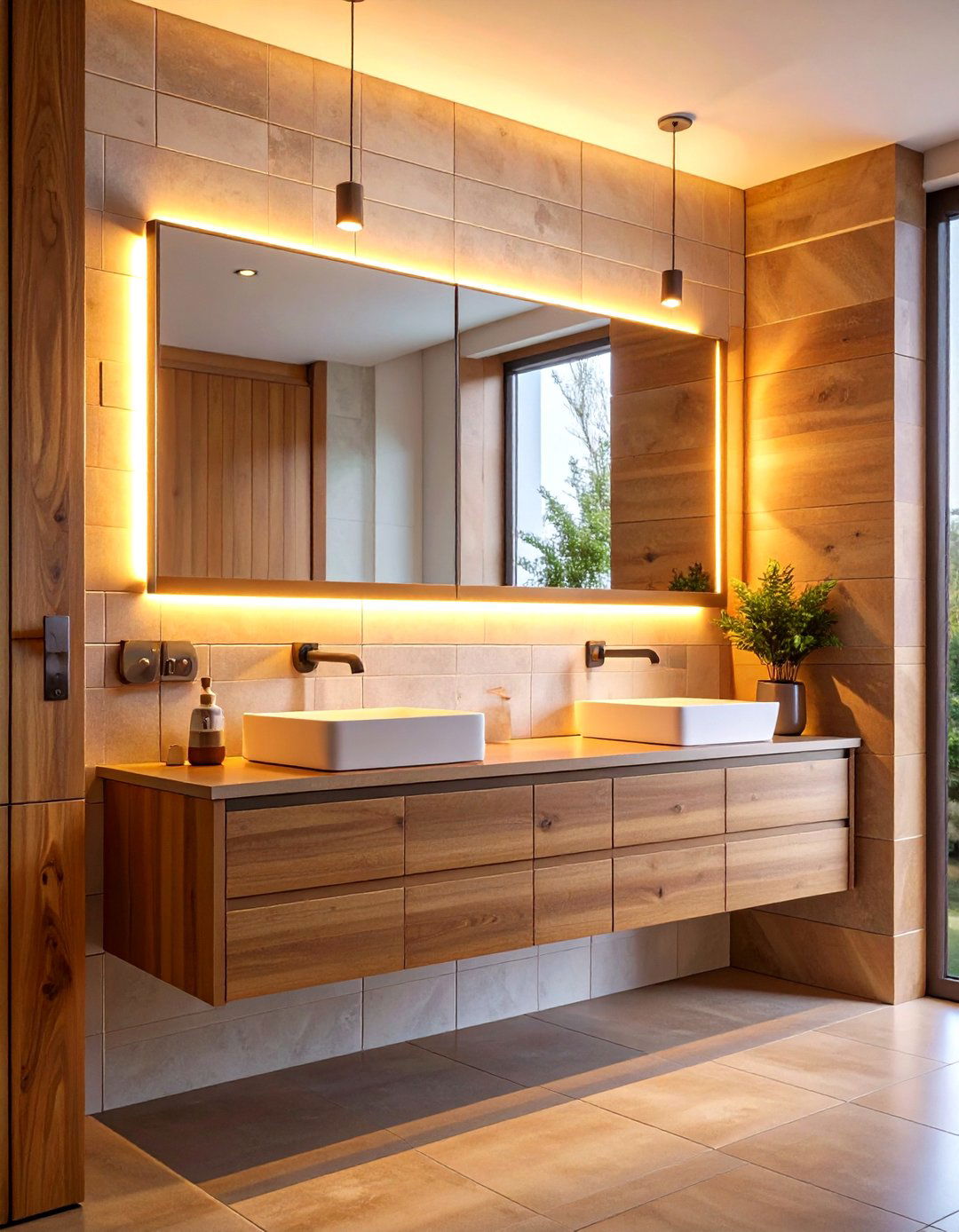
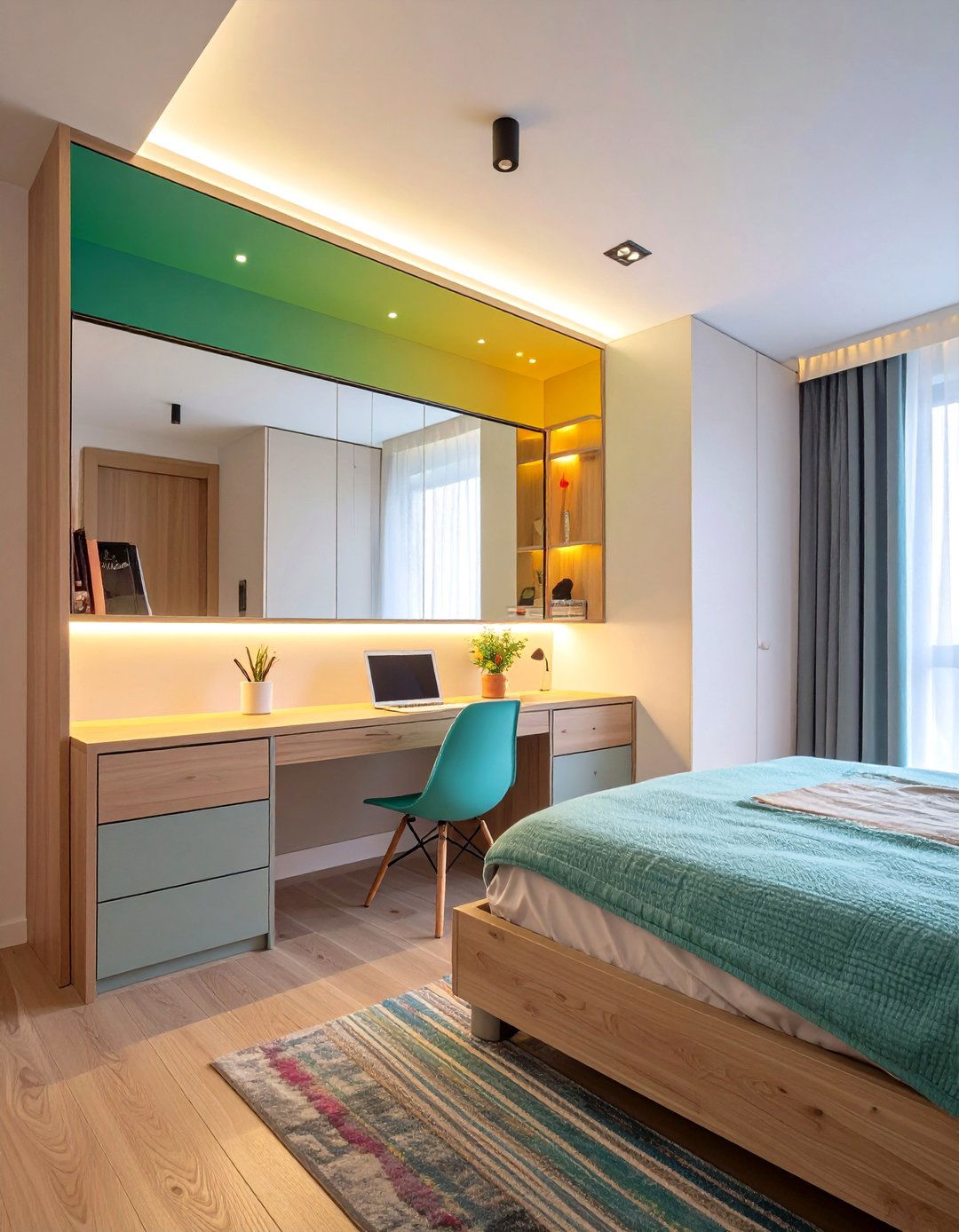
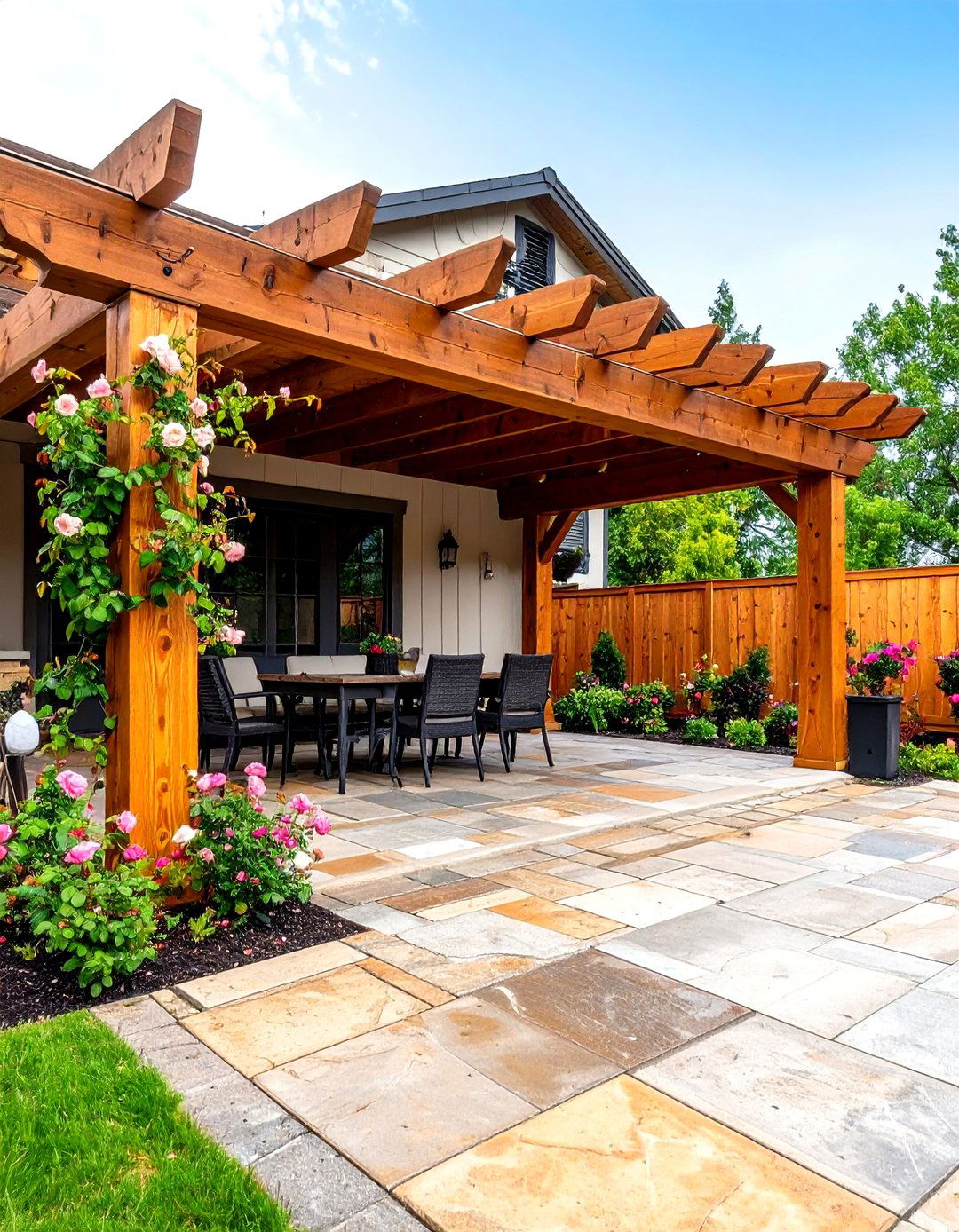
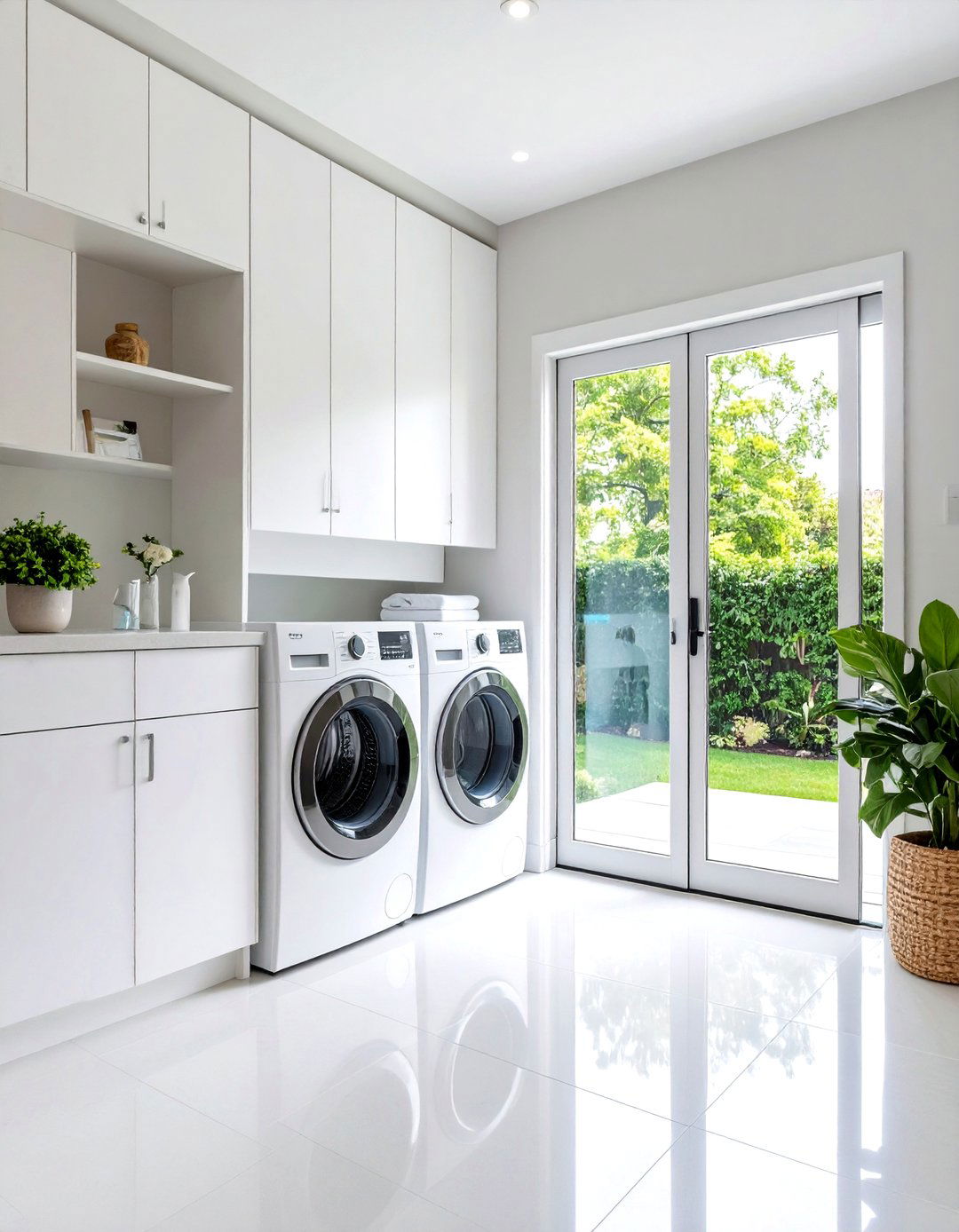
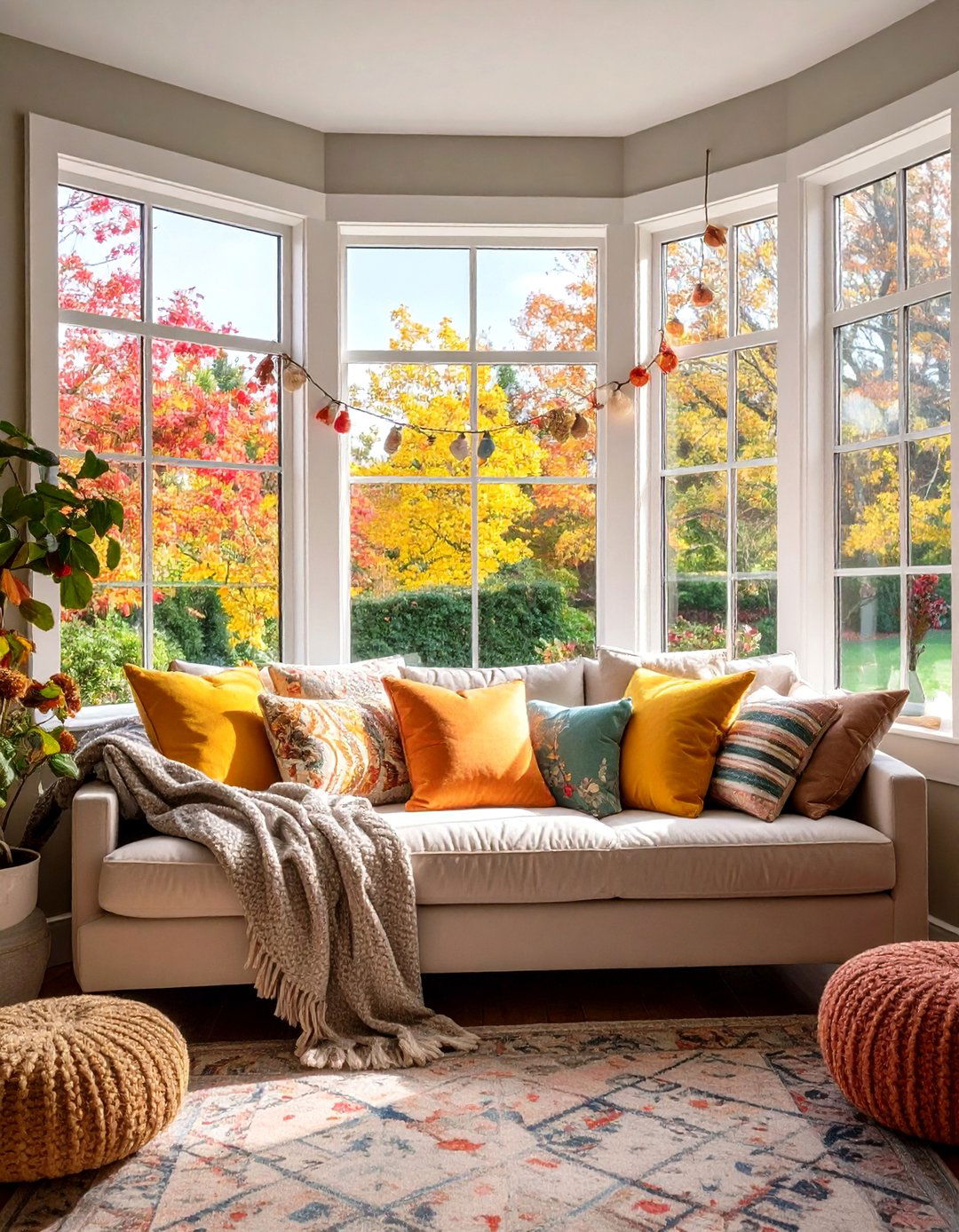
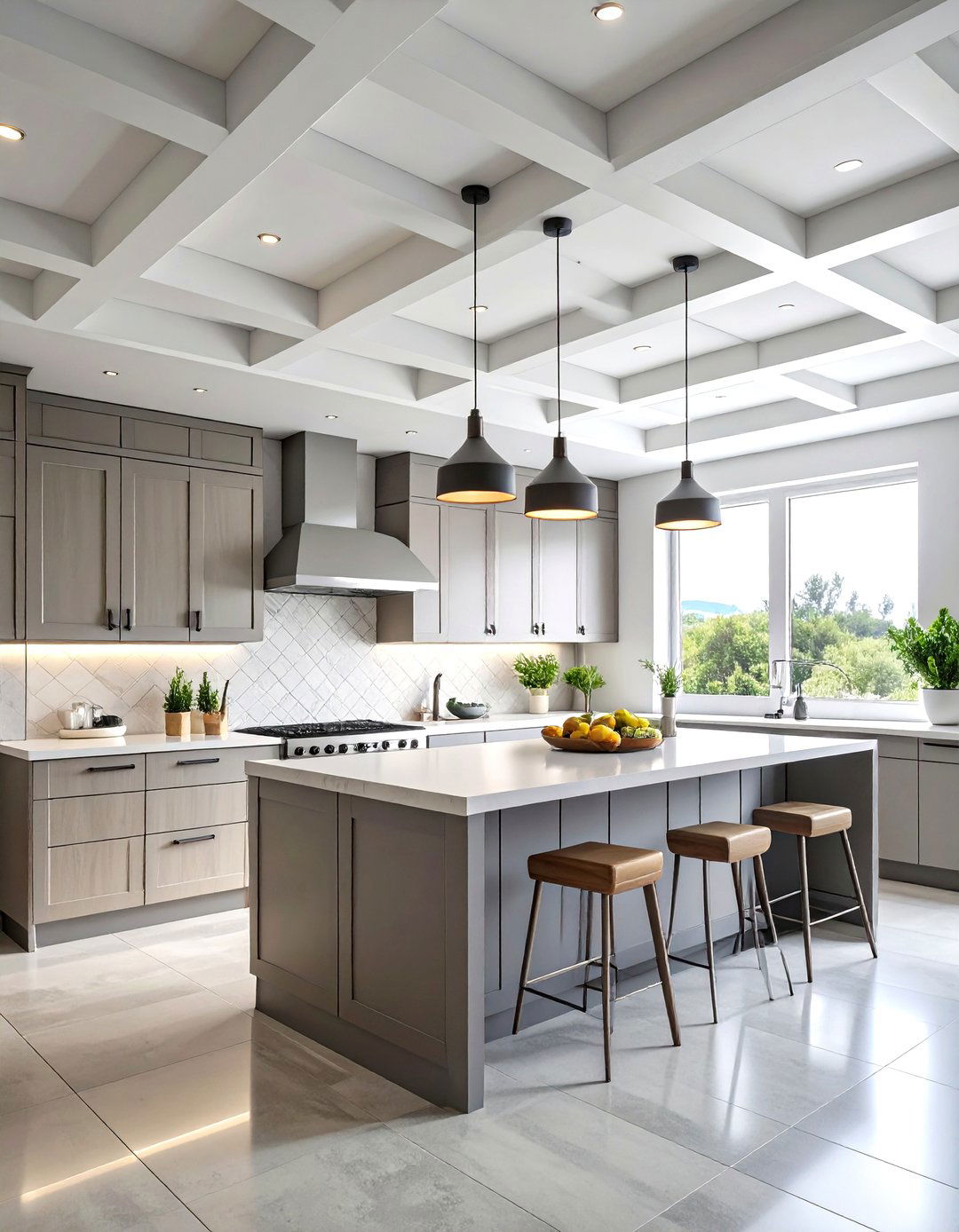


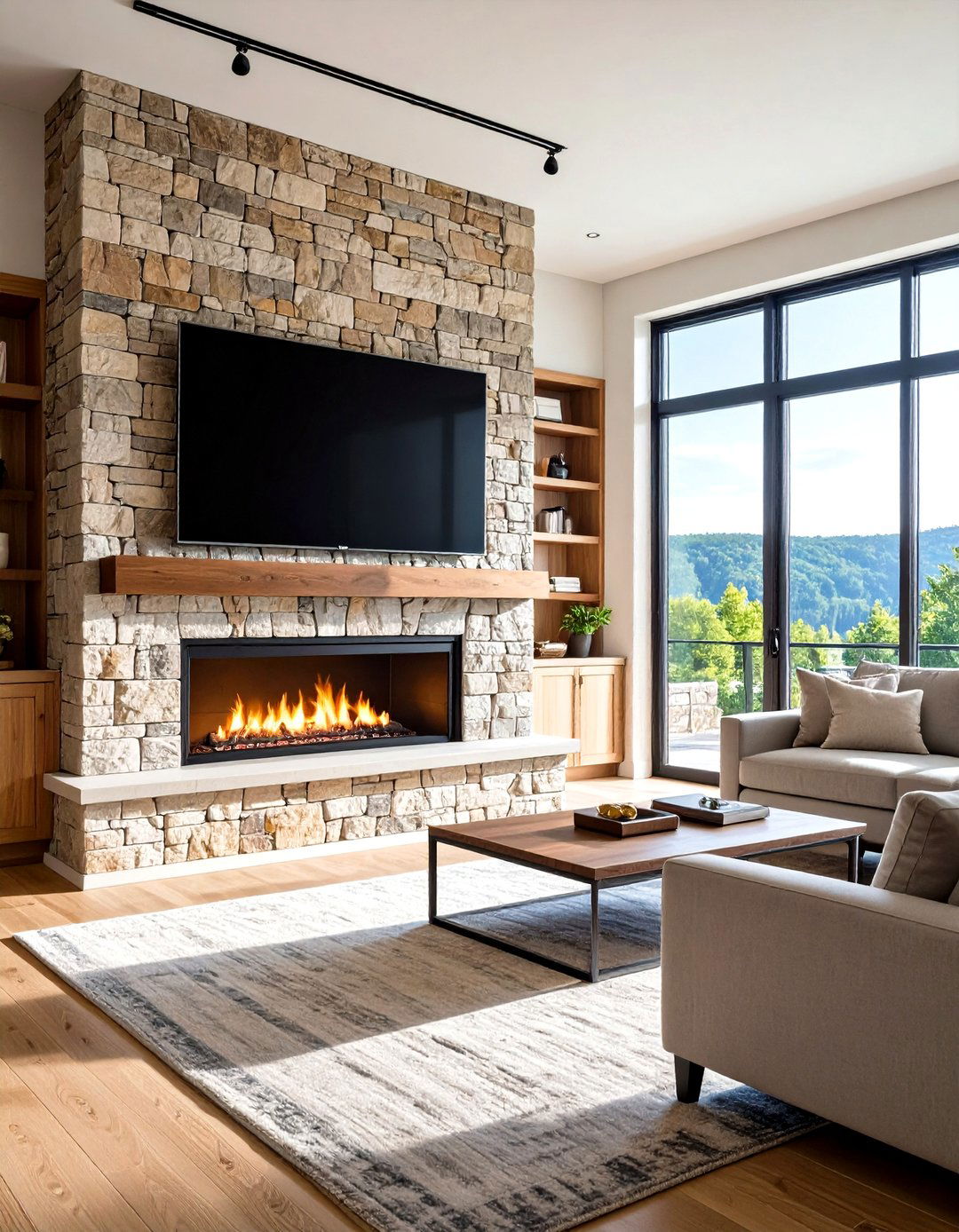
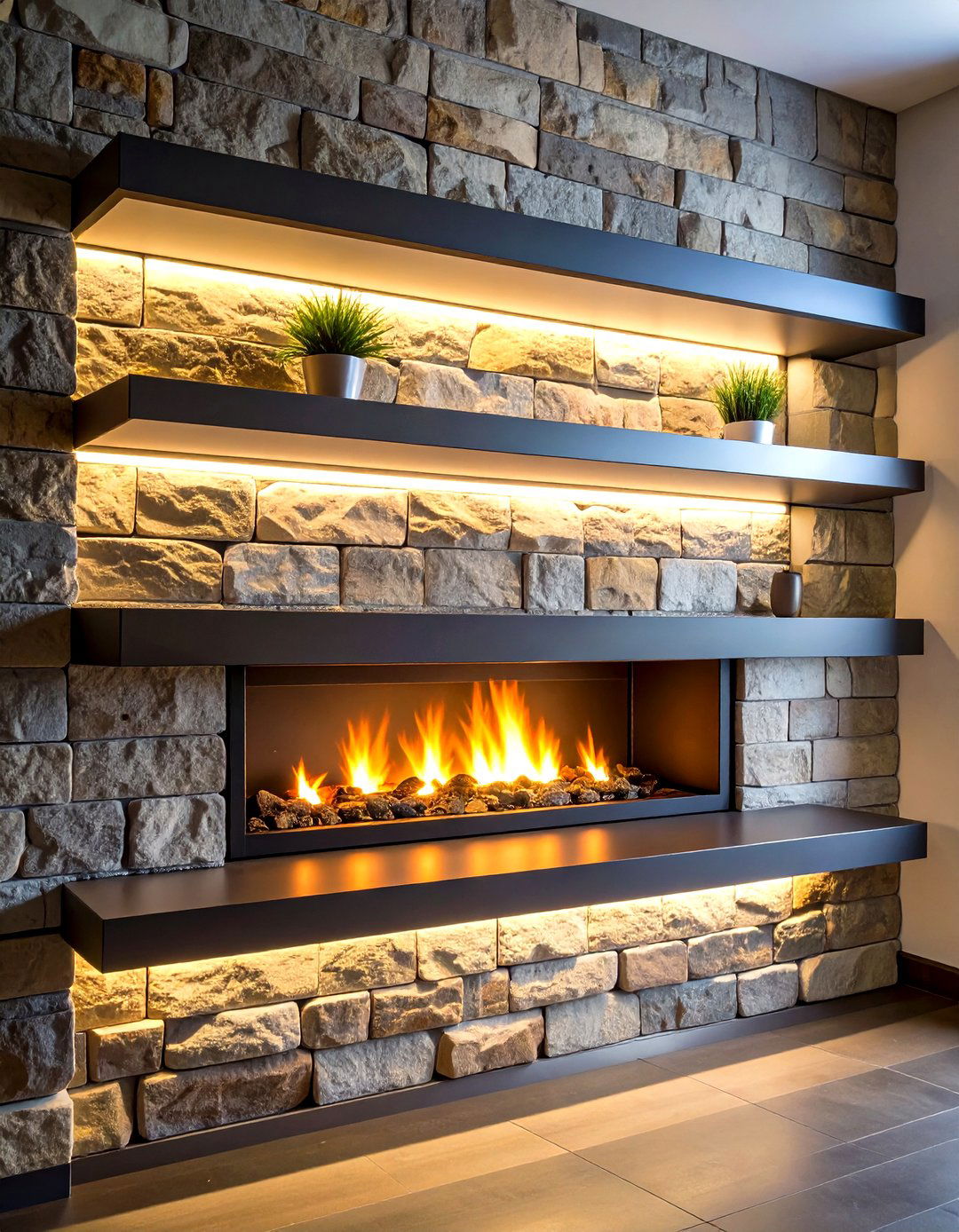
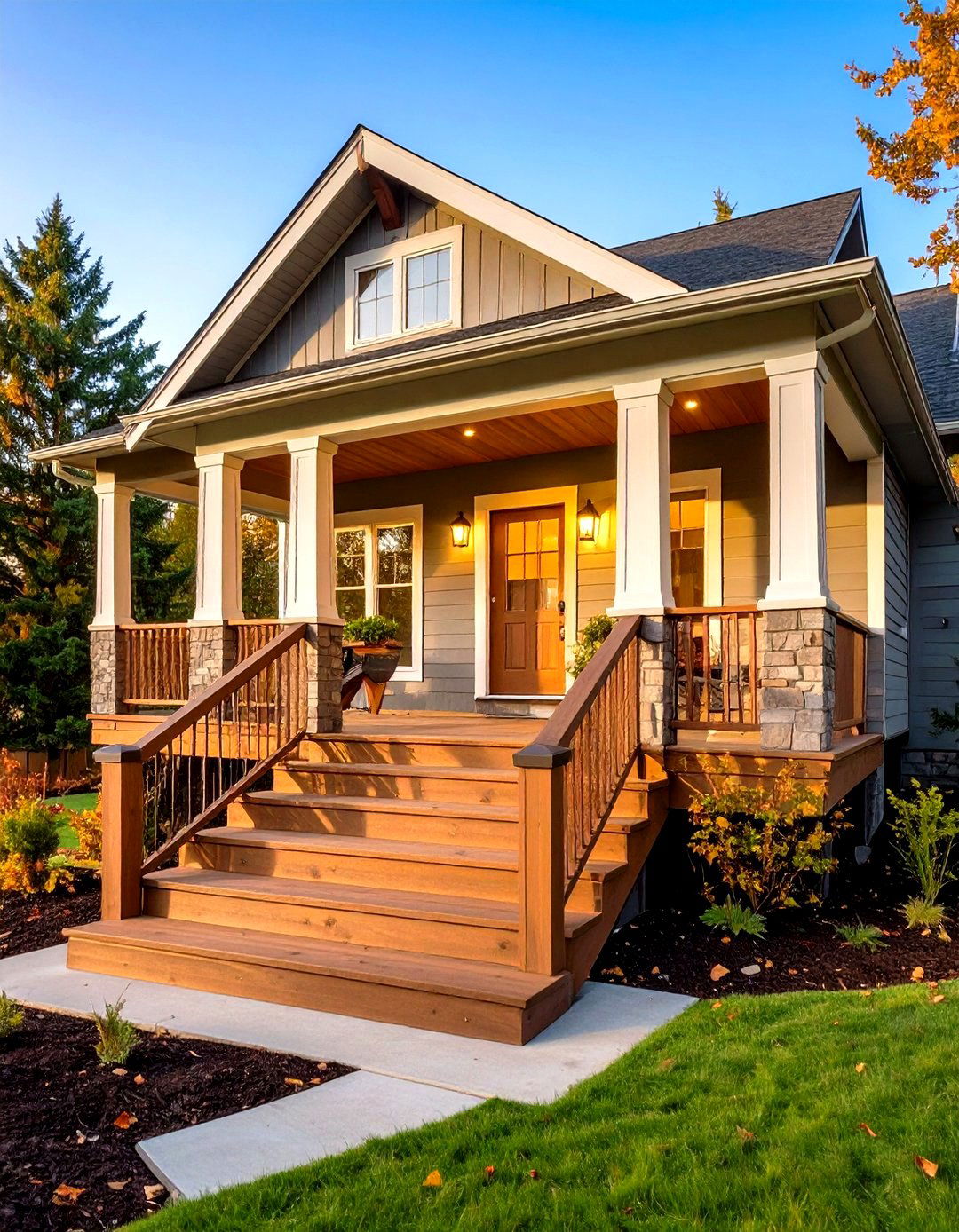
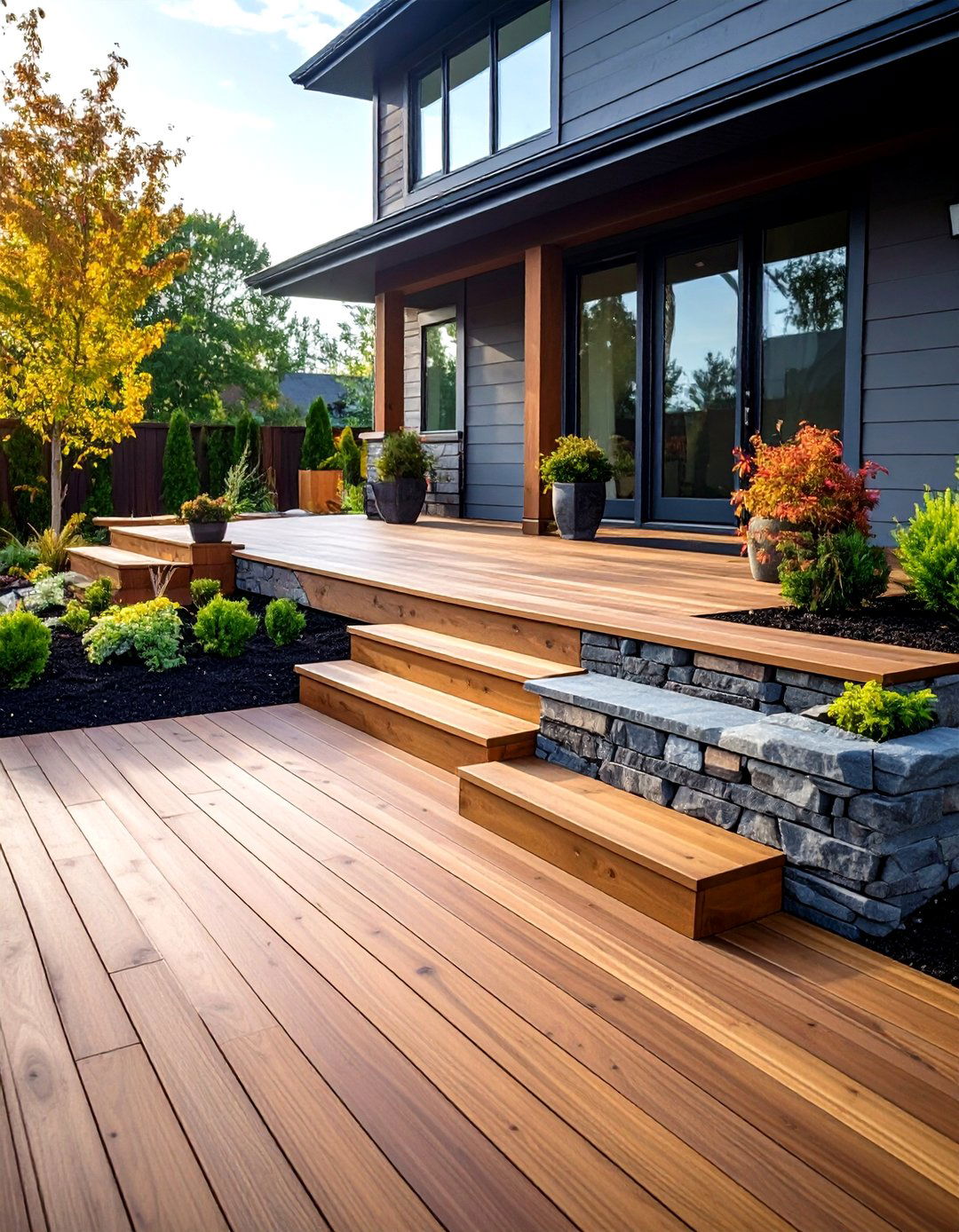

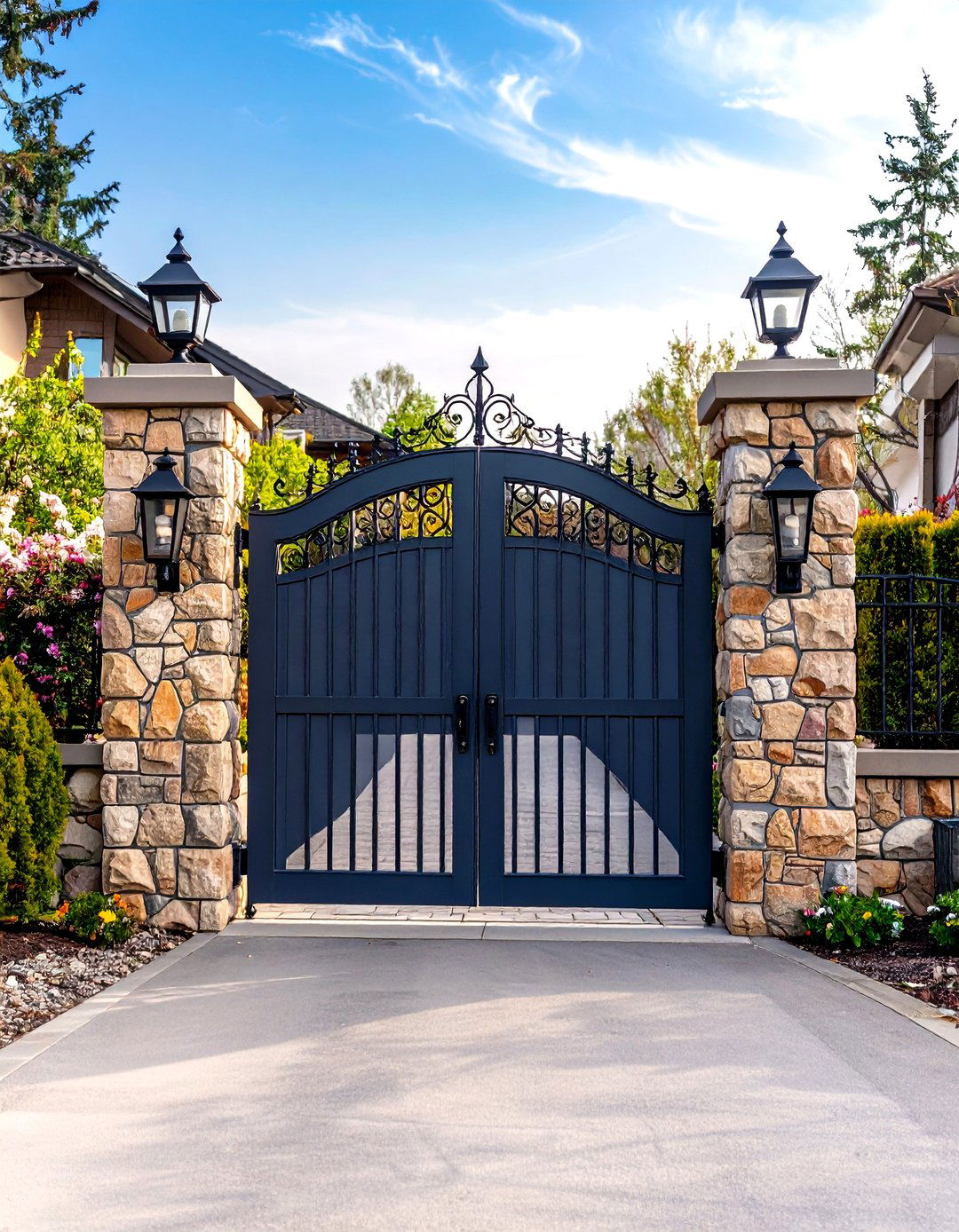
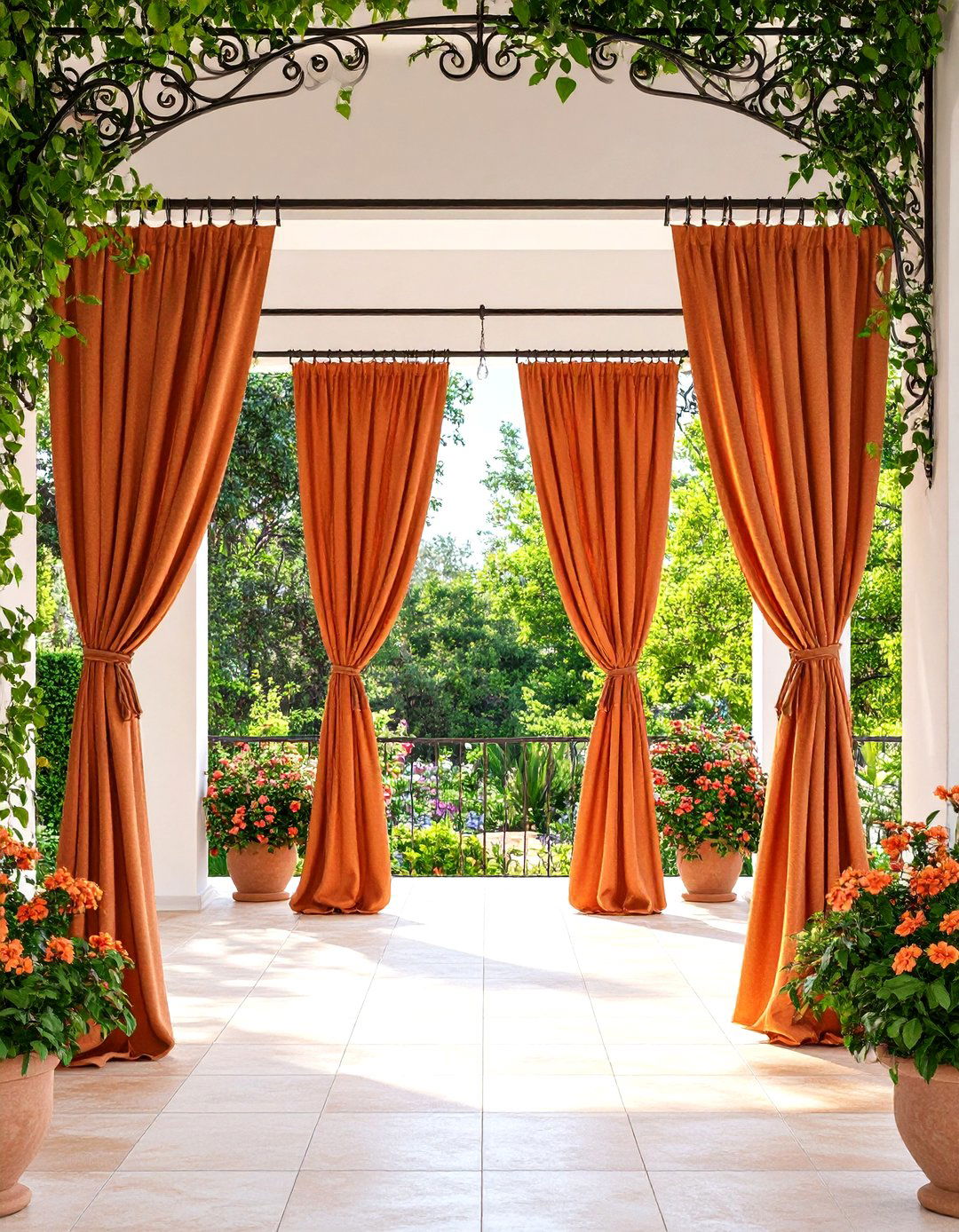
Leave a Reply